This post may contain affiliate links. Please read our disclosure policy.
Whether you want a gluten-free alternative or something less corny, these are the best cornmeal substitutes for sweet and savory dishes.
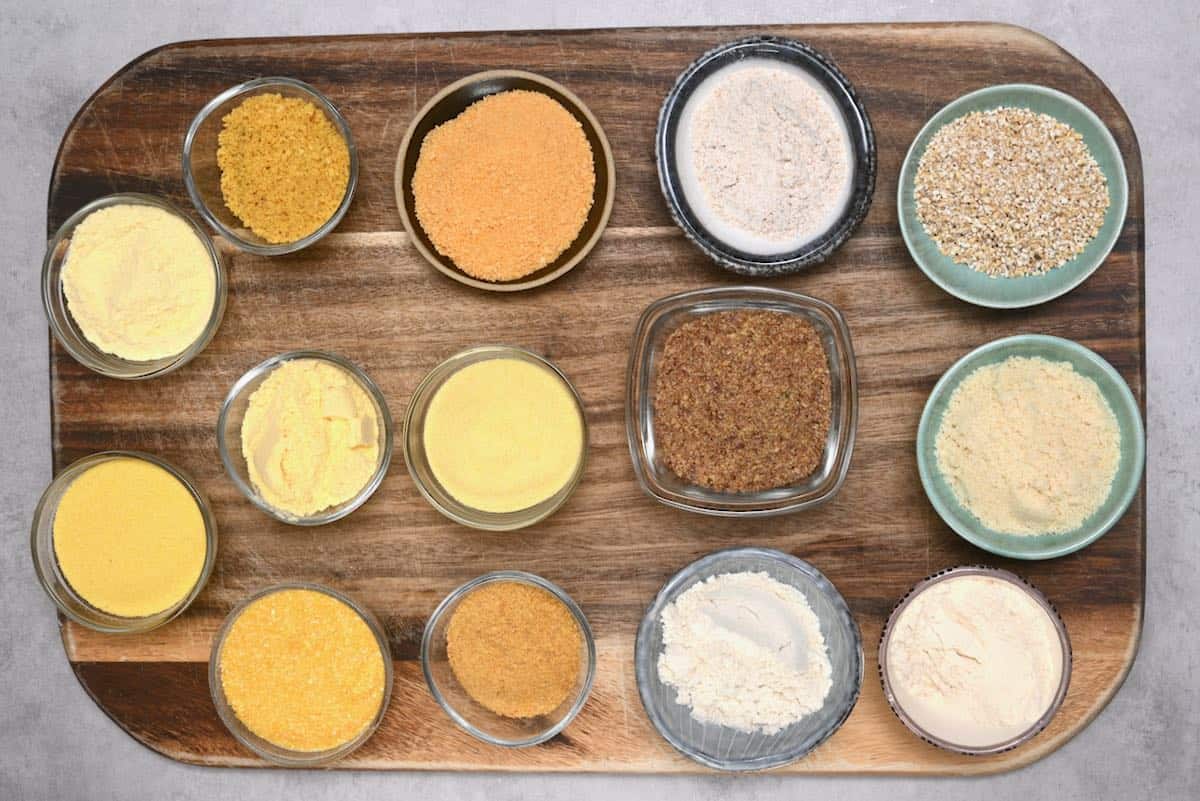
Cornmeal is a rougher flour made from grinding dried corn. It can come in a variety of textures, flavors, and colors and is used as a flour substitute to make everything from porridge to tortillas. So, what can I substitute for cornmeal, I hear you ask? Below are the best options.
Things to consider when substituting
With cornmeal substitutes, what you choose comes down to two important factors:
- Taste: With a distinctive taste, any substitute for cornmeal needs to compliment whatever you’re making. Depending on whether it’s a sweet or savory dish, some substitutes will work better than others.
- Texture: Cornmeal is typically a coarse grain that can be rougher or finer, depending on the kind you buy. Depending on the dish you’re making, consider how a substitute will change the texture.
What are the best cornmeal substitutes?
Ranging from the most to least similar to traditional corn meal, based on similarity to in terms of both flavor and texture:
Cornflour
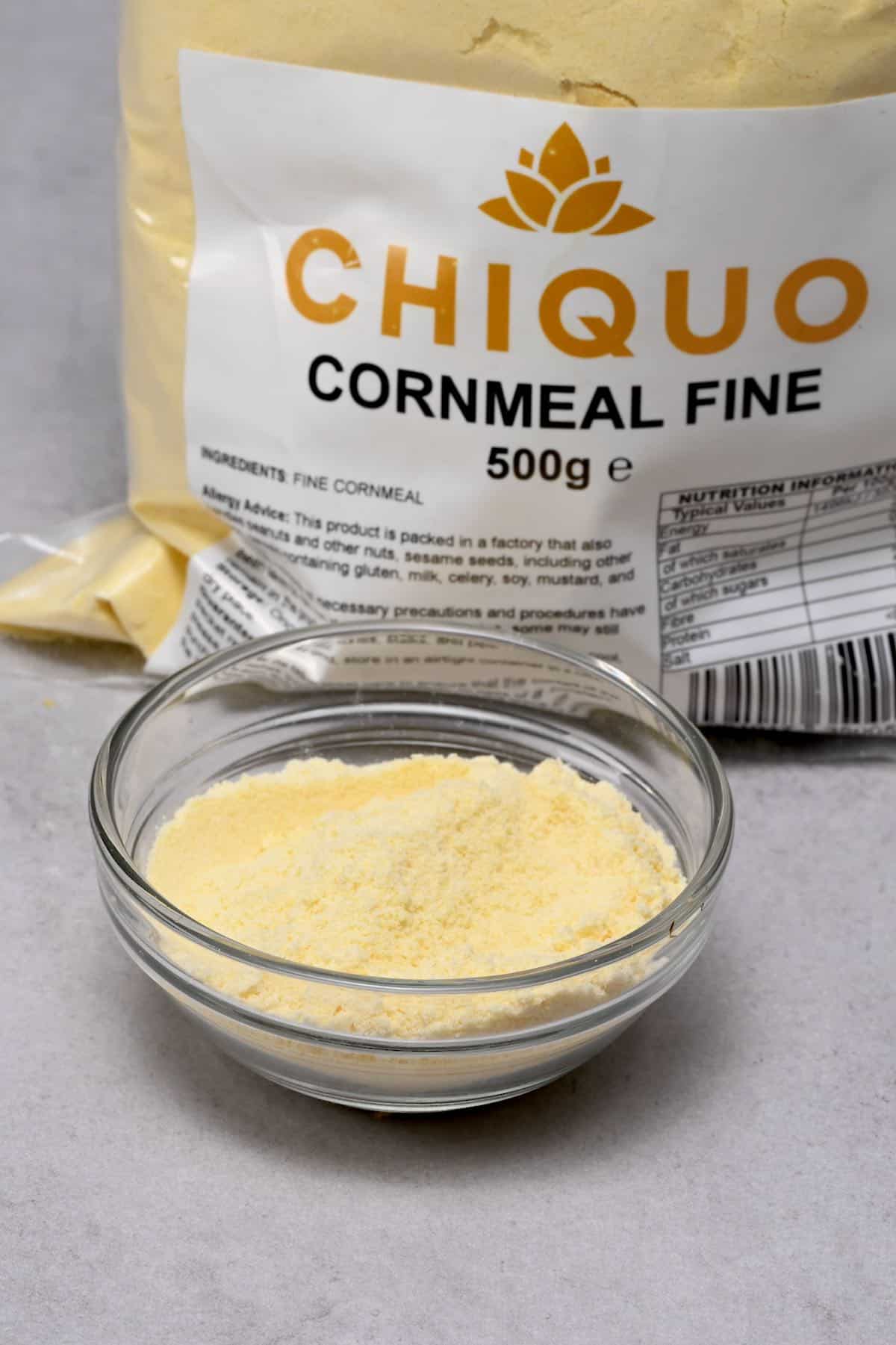
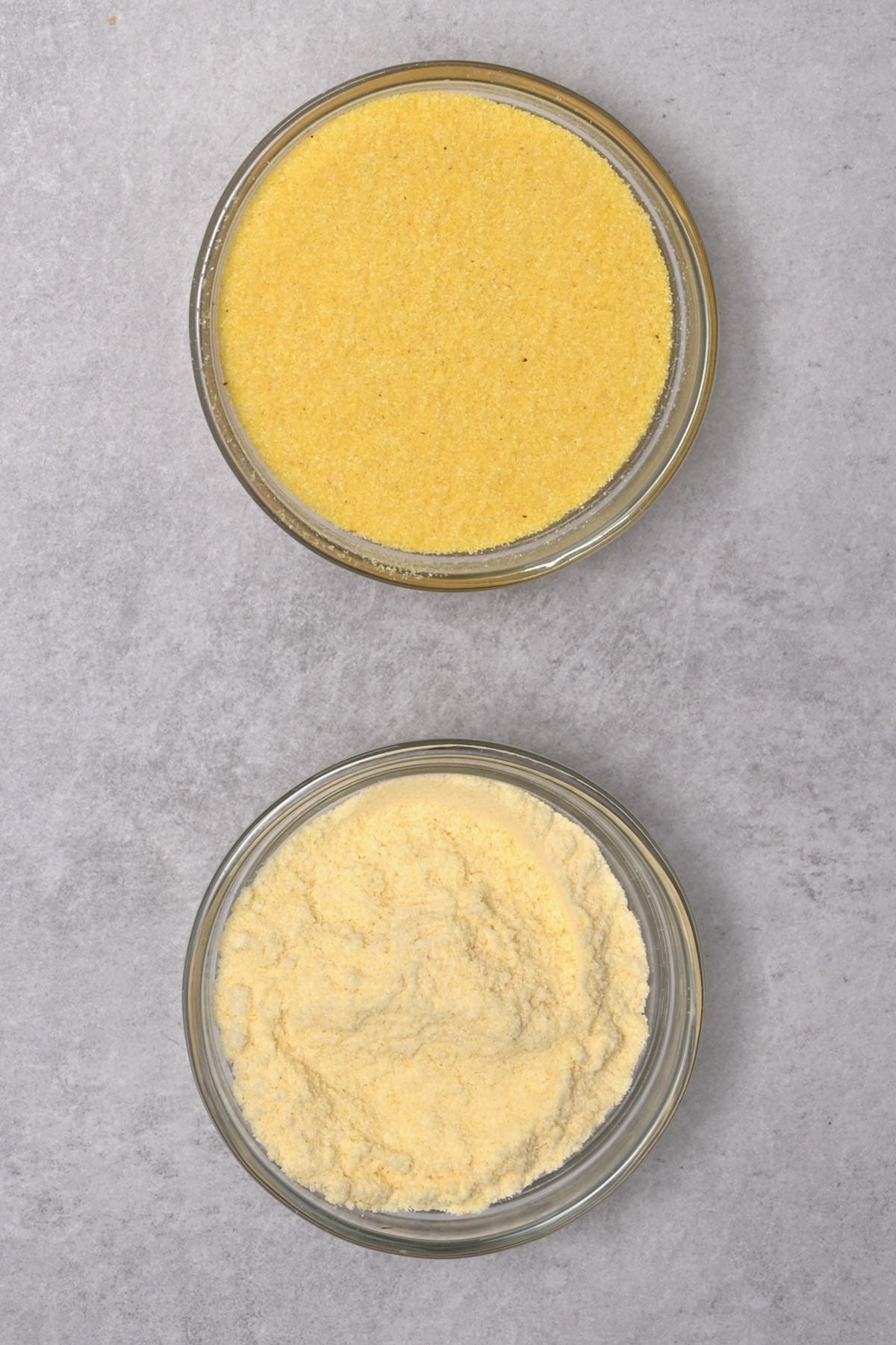
If you don’t like the texture of cornmeal, corn flour is an easy substitute that is a more finely ground version of corn. Because of its fine texture, it’s best used for baking breads and cakes – you’ll get a lighter bake with the flour than you would with the meal.
Ingredients and Measurements: Use the same amount of corn flour as you would cornmeal.
Process: Add to your recipe as normal. Cooking time will likely be shorter as the mix is lighter, so keep an eye on the oven. And remember – corn flour is not the same as cornstarch (which is a thickener).
Corn grits
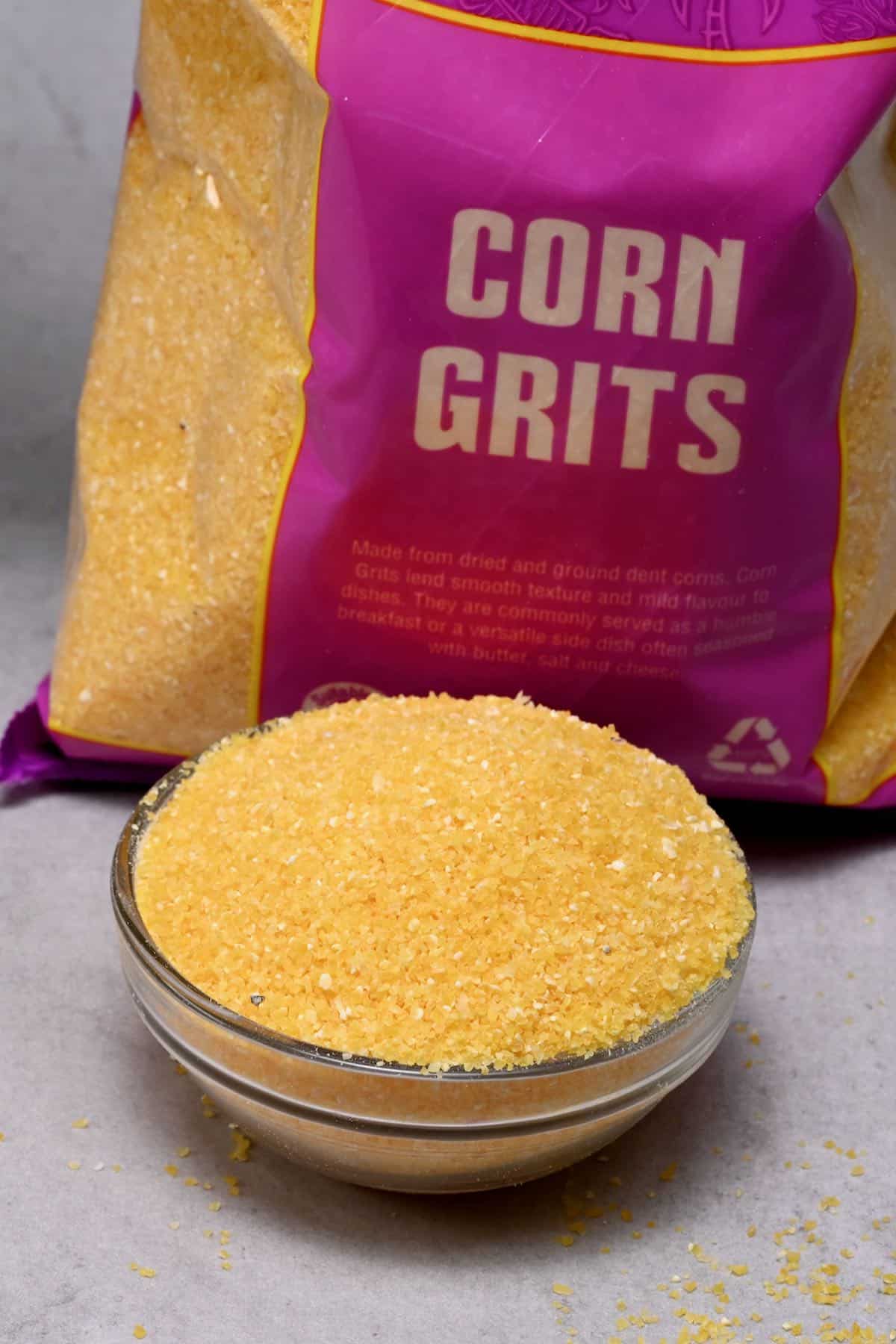
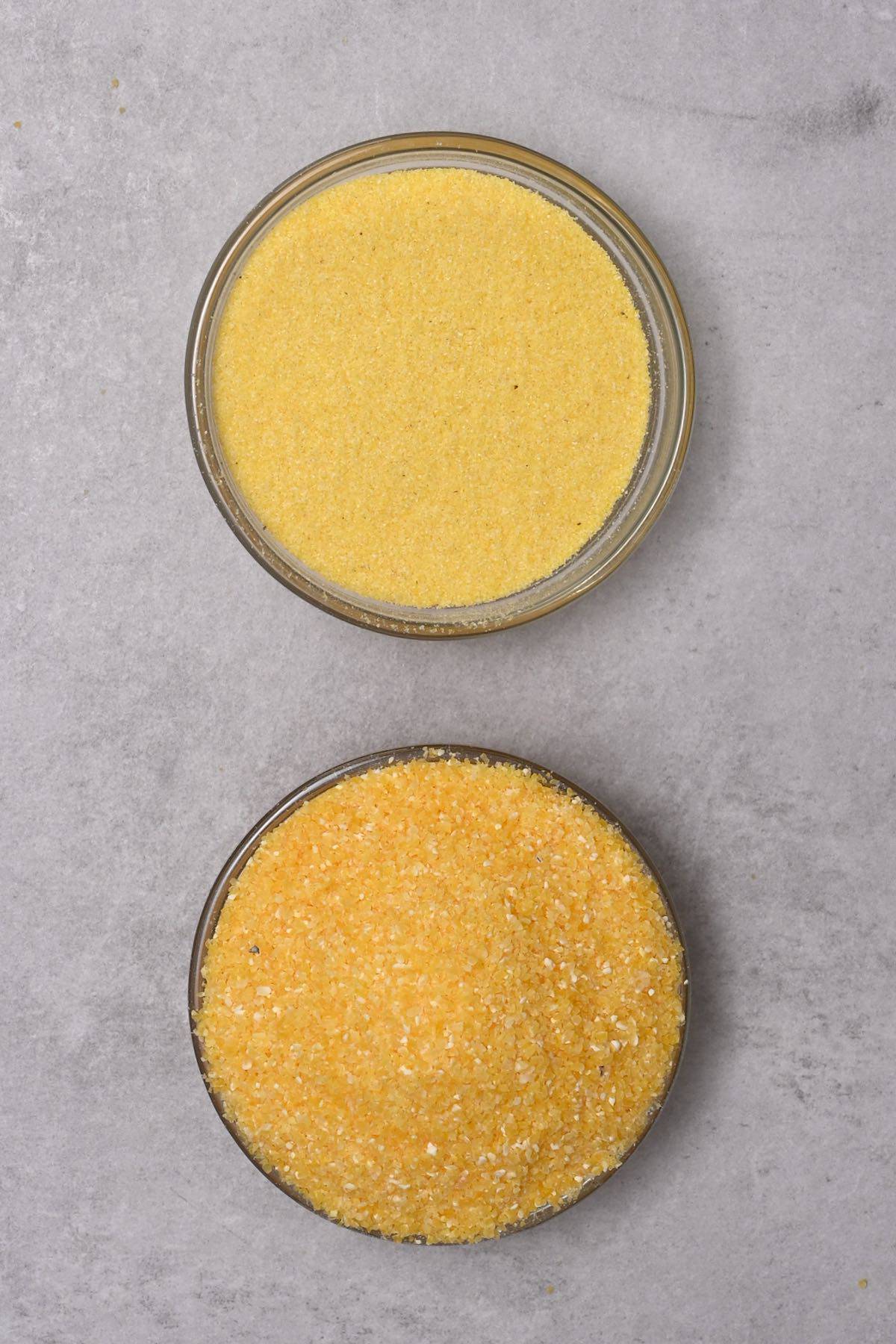
On the other side of the texture spectrum, corn grits are thicker and coarser and often served boiled, on their own, in the southern US. As a substitute, grits work best for denser recipes because of their texture – think pancakes, cornbread, or corn muffins.
Ingredients and Measurements: Use about ½ cup of corn grits to 1 cup of corn meal.
Process: Use as you would corn meal. For a smoother overall texture, you can grind the grits down to replicate corn meal.
Masa harina
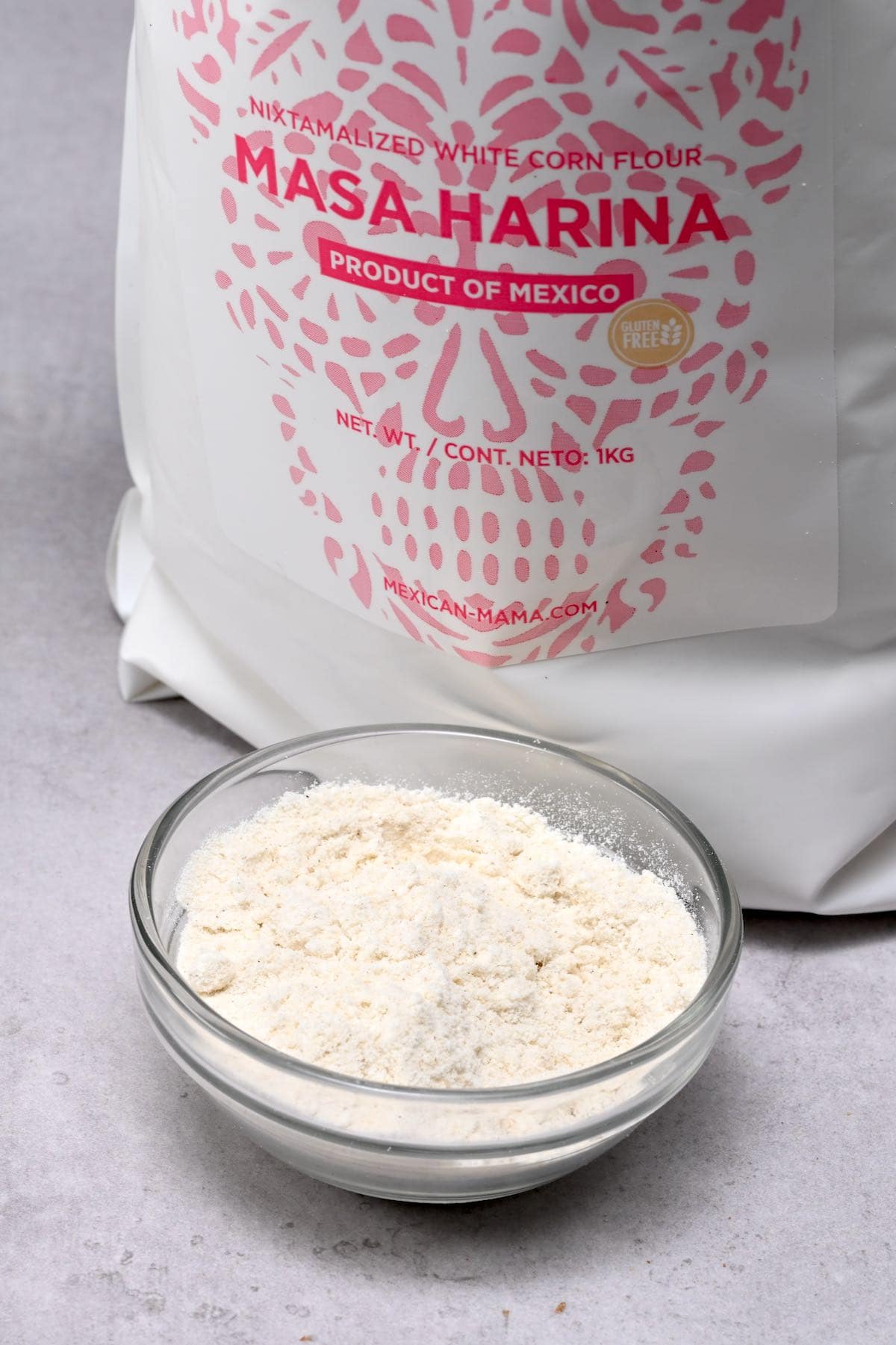
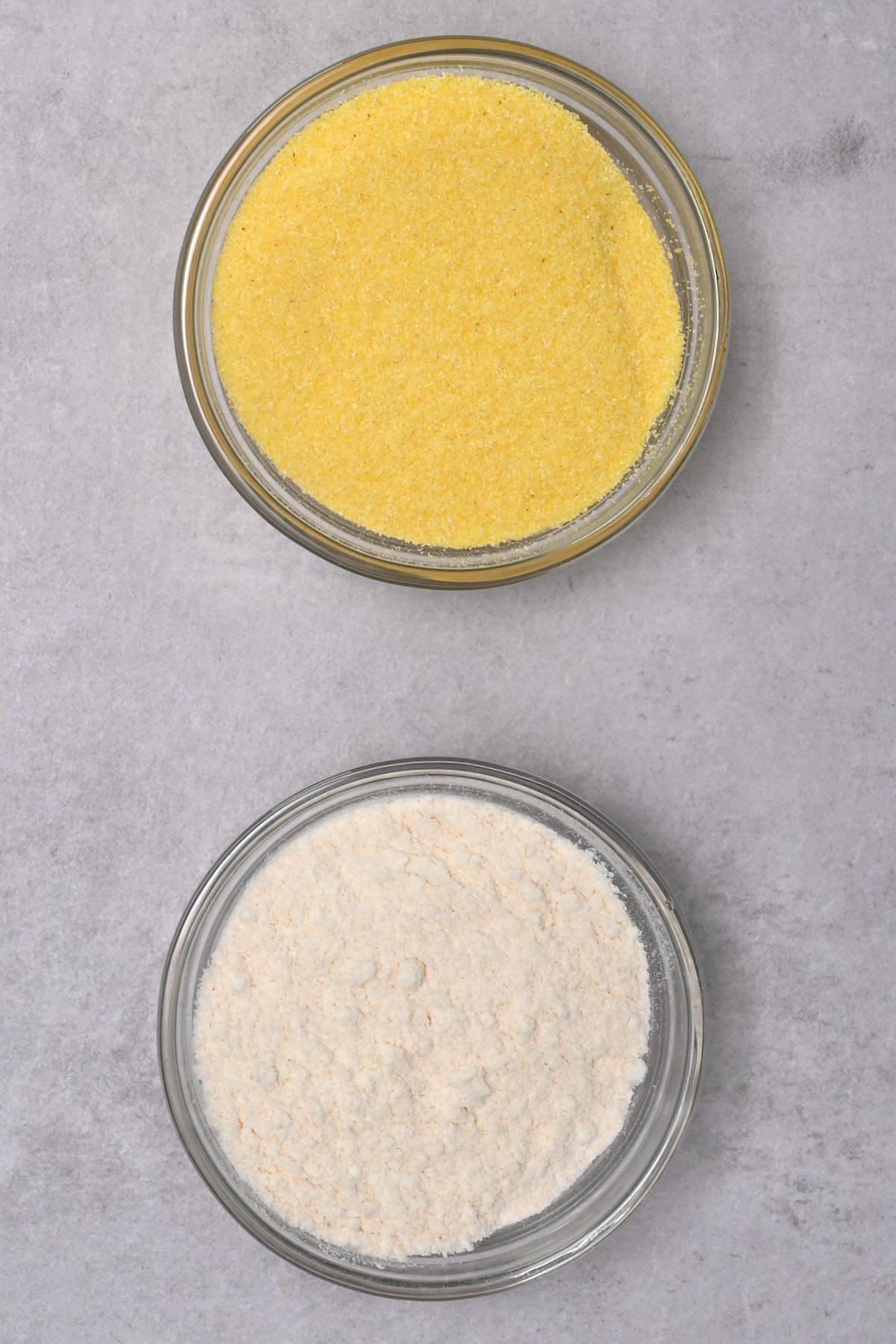
Made from white ground corn with its skins removed and most used in Mexican cooking, masa harina has a similar texture to fine corn meal. It’s best used for making breads, tortillas, and flatbread doughs.
Ingredients and Measurements: Use the same measurement of masa harina as cornmeal.
Process: Use as the recipe directs.
Semolina
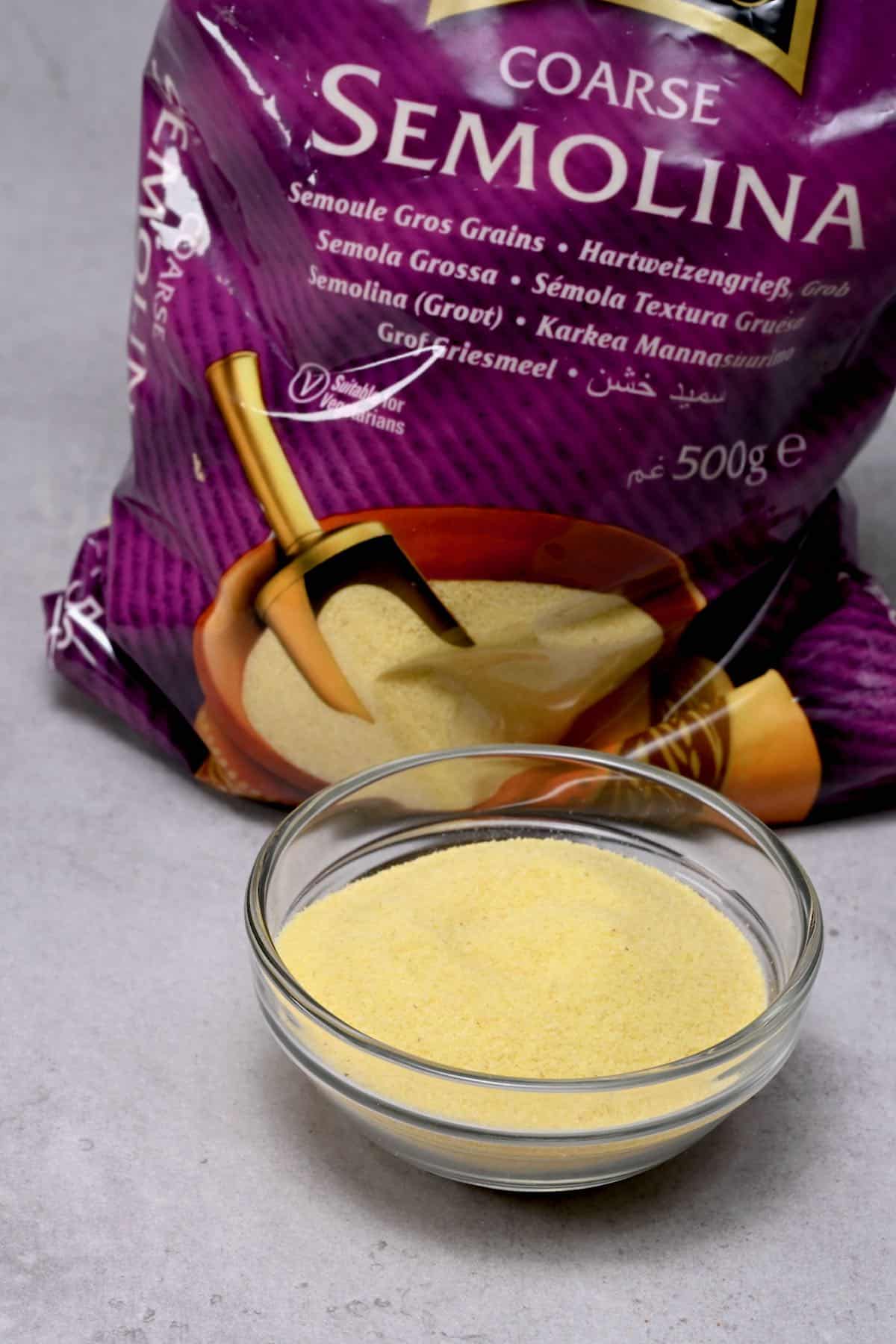
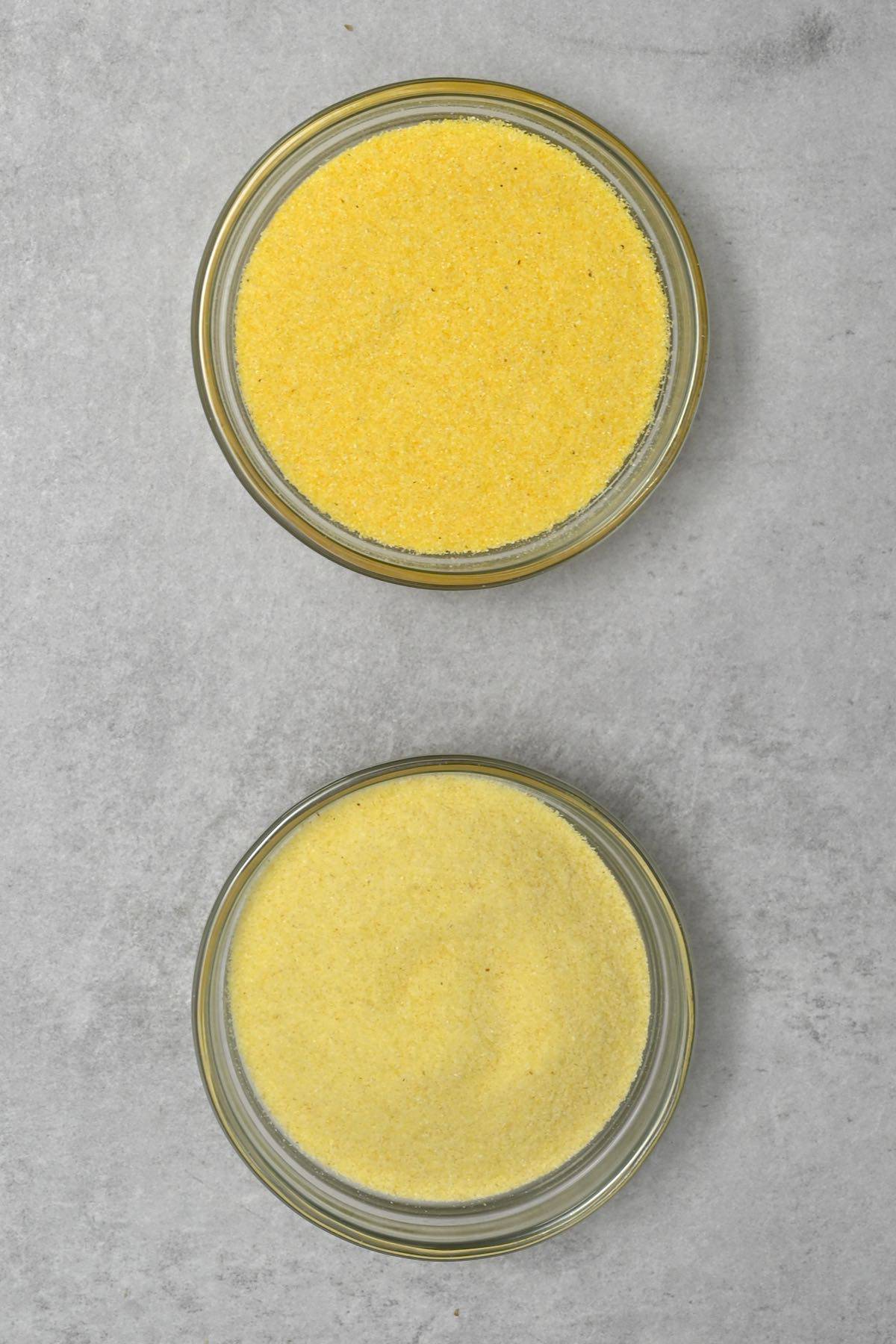
Semolina is a super fine durum wheat that’s typically used to make couscous, pasta, and puddings. Because of its texture, slightly nutty taste, and high-gluten content, it’s a great cornmeal substitute for pizza crusts, breads, and flatbreads.
Ingredients and Measurements: Use 1 ¼ cups semolina to 1 cup corn meal – you’ll need slightly more semolina than corn meal called for in the recipe.
Process: Add the semolina to the mix as directed in the recipe.
Polenta
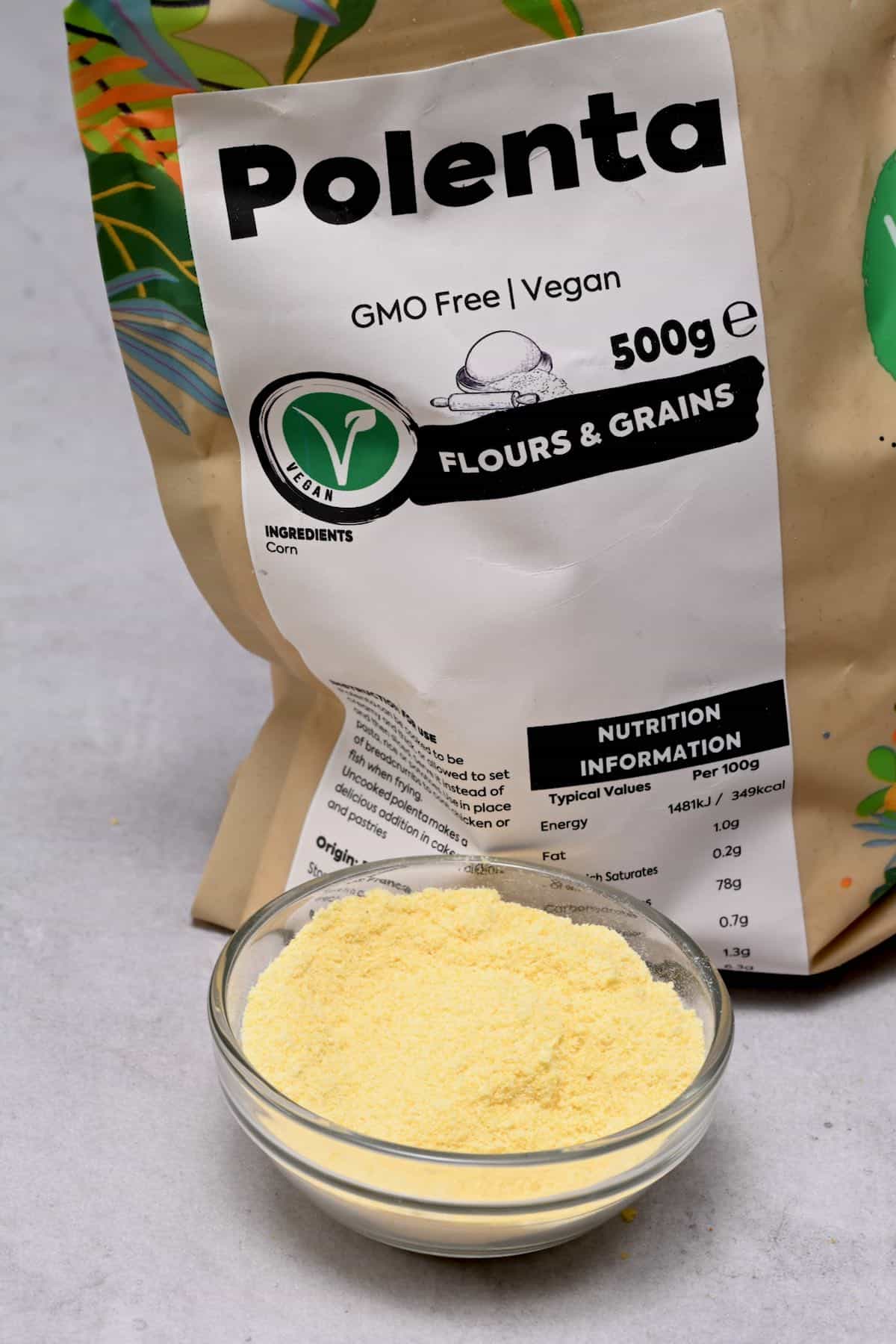
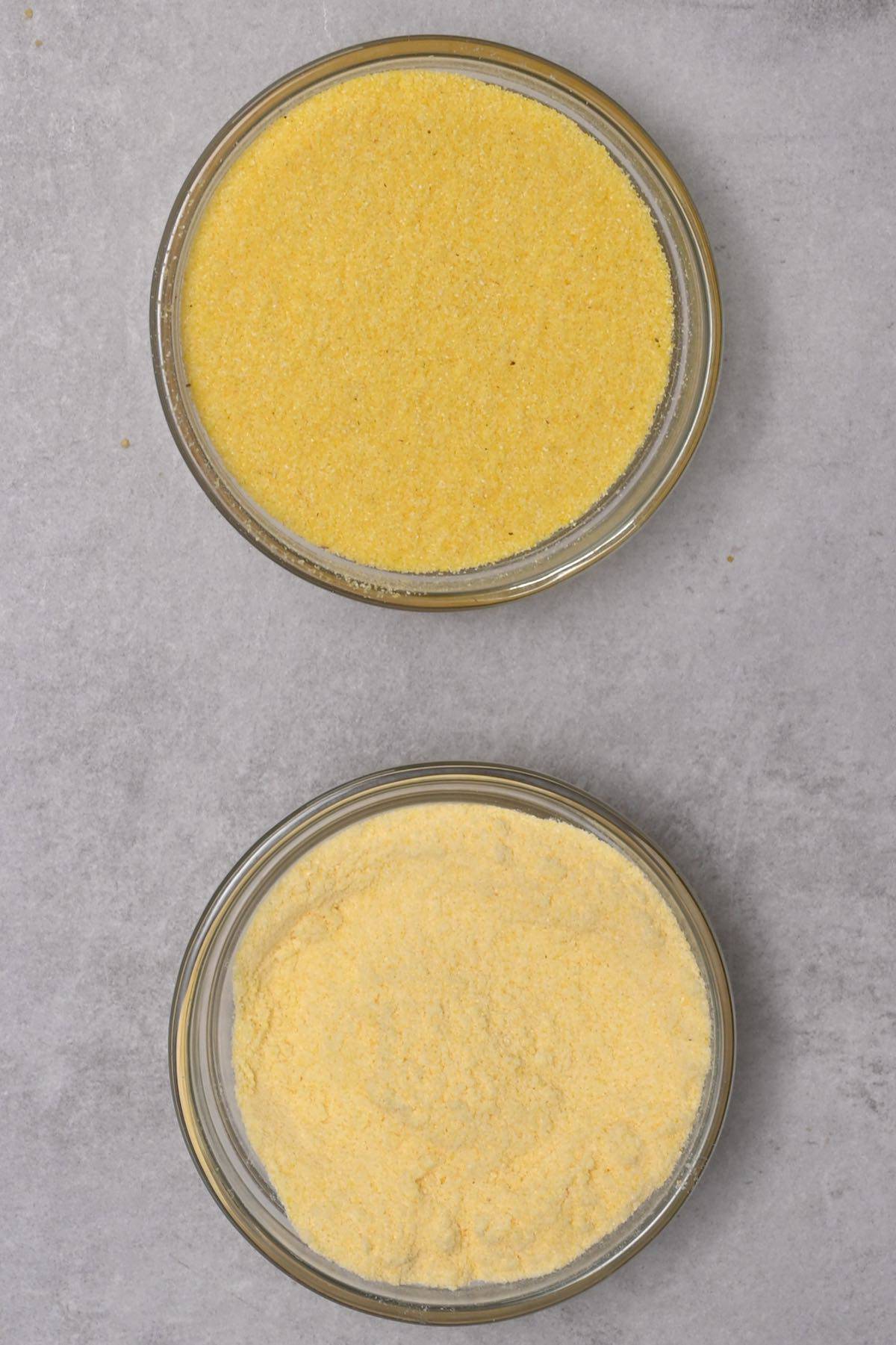
Polenta ranges from super fine to coarse – so you can adapt your recipe to whatever kind you have. Because it’s ground from yellow corn, it has a sweeter taste than corn meal and is best used in sweet recipes, particularly cakes. In England, corn meal is known as polenta, which just tells you how similar they are!
Ingredients and Measurements: Use the same measurement of polenta as you would cornmeal. If using coarse polenta, use ¾ cup per 1 cup of polenta.
Process: Use the polenta as the recipe directs to use the cornmeal.
Breadcrumbs
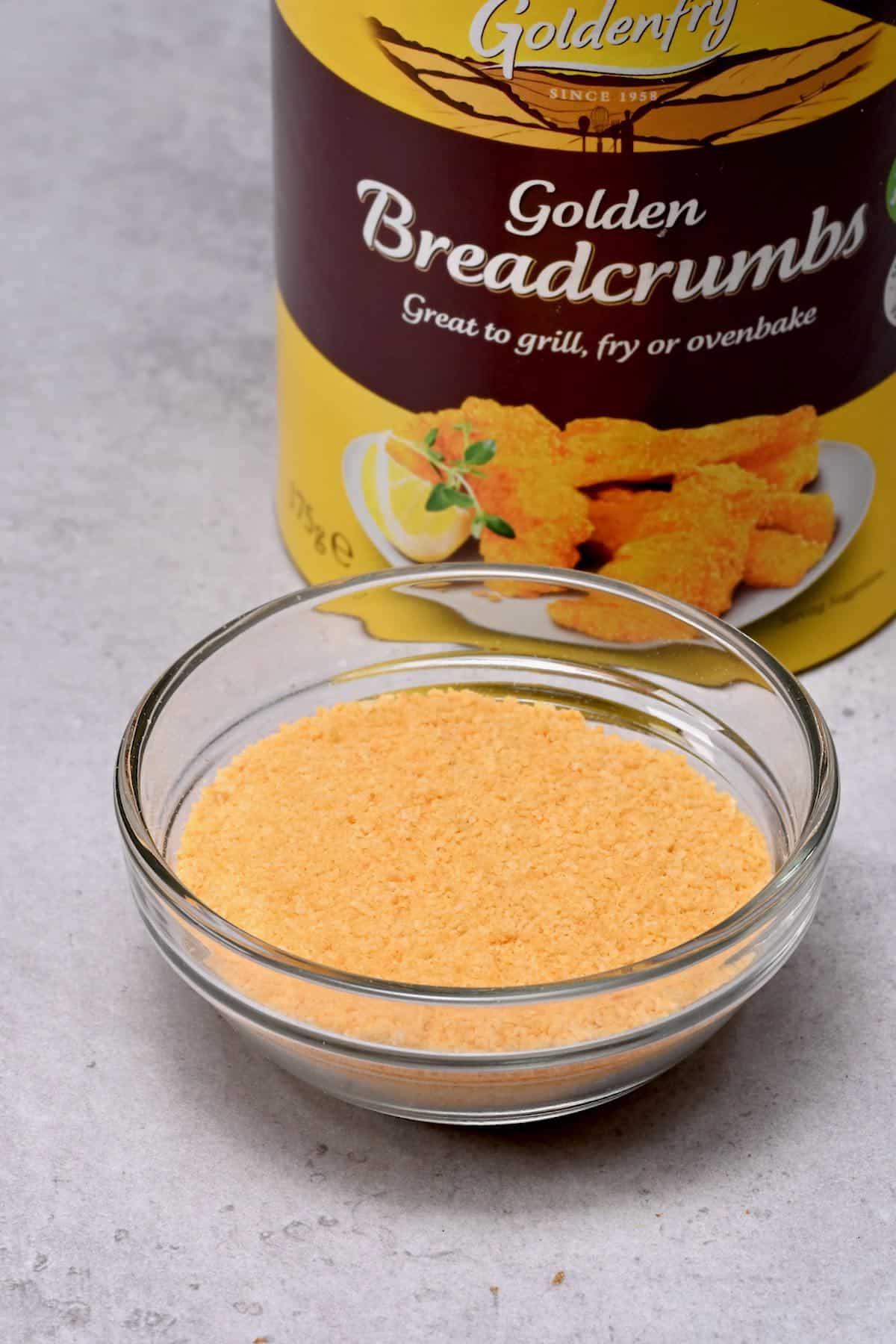
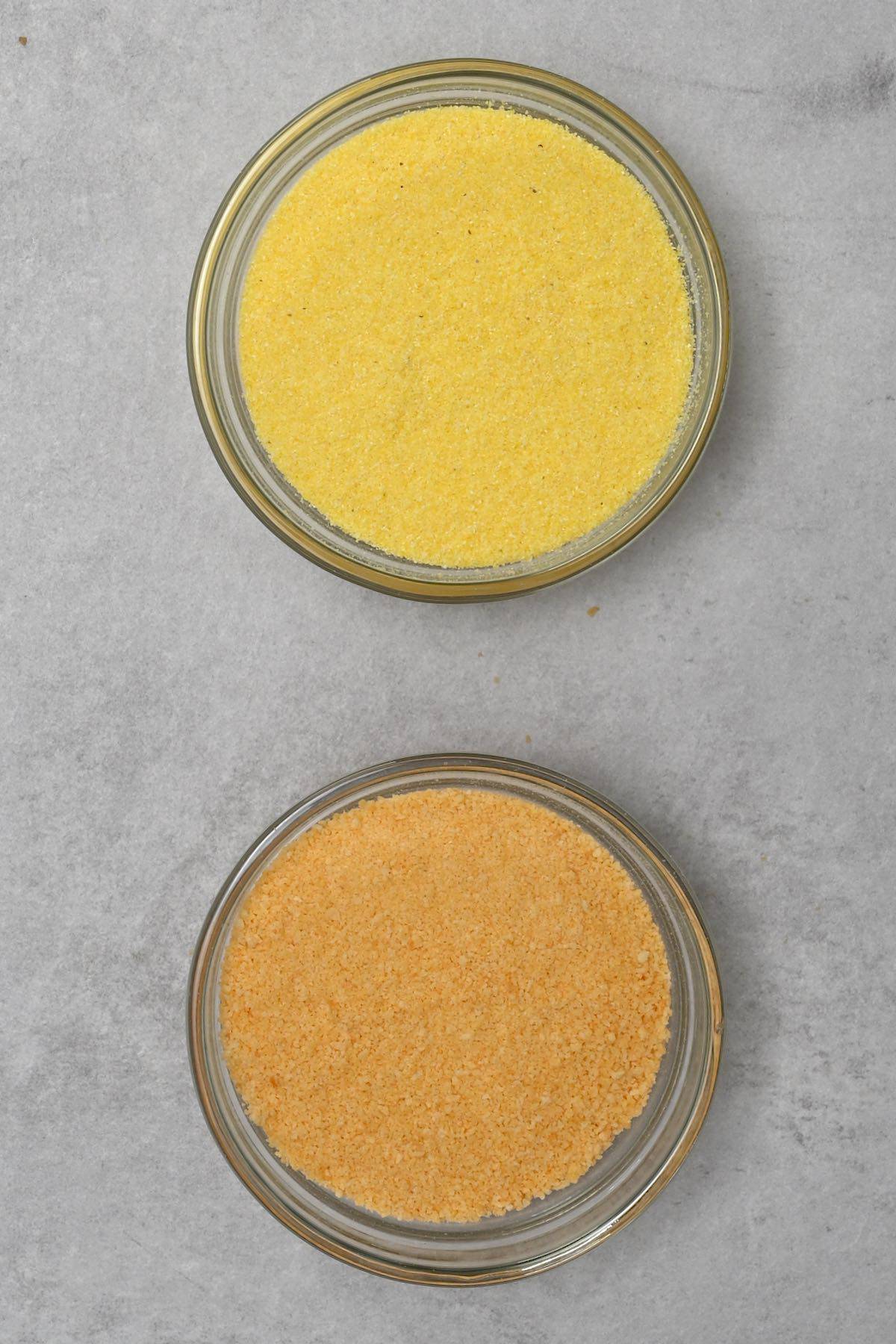
Best substituted for frying or for adding extra texture, breadcrumbs are a very traditional ingredient that’s also easy to make. Because they change to a gorgeous golden brown color when cooed, they’ll bring both texture and flavor to your dish.
Ingredients and Measurements: Use non-flavored, regular breadcrumbs at equal measurement to corn meal.
Process: You can buy breadcrumbs pre-made or try making your own with leftover bread. Use as the recipe directs.
Ground oats
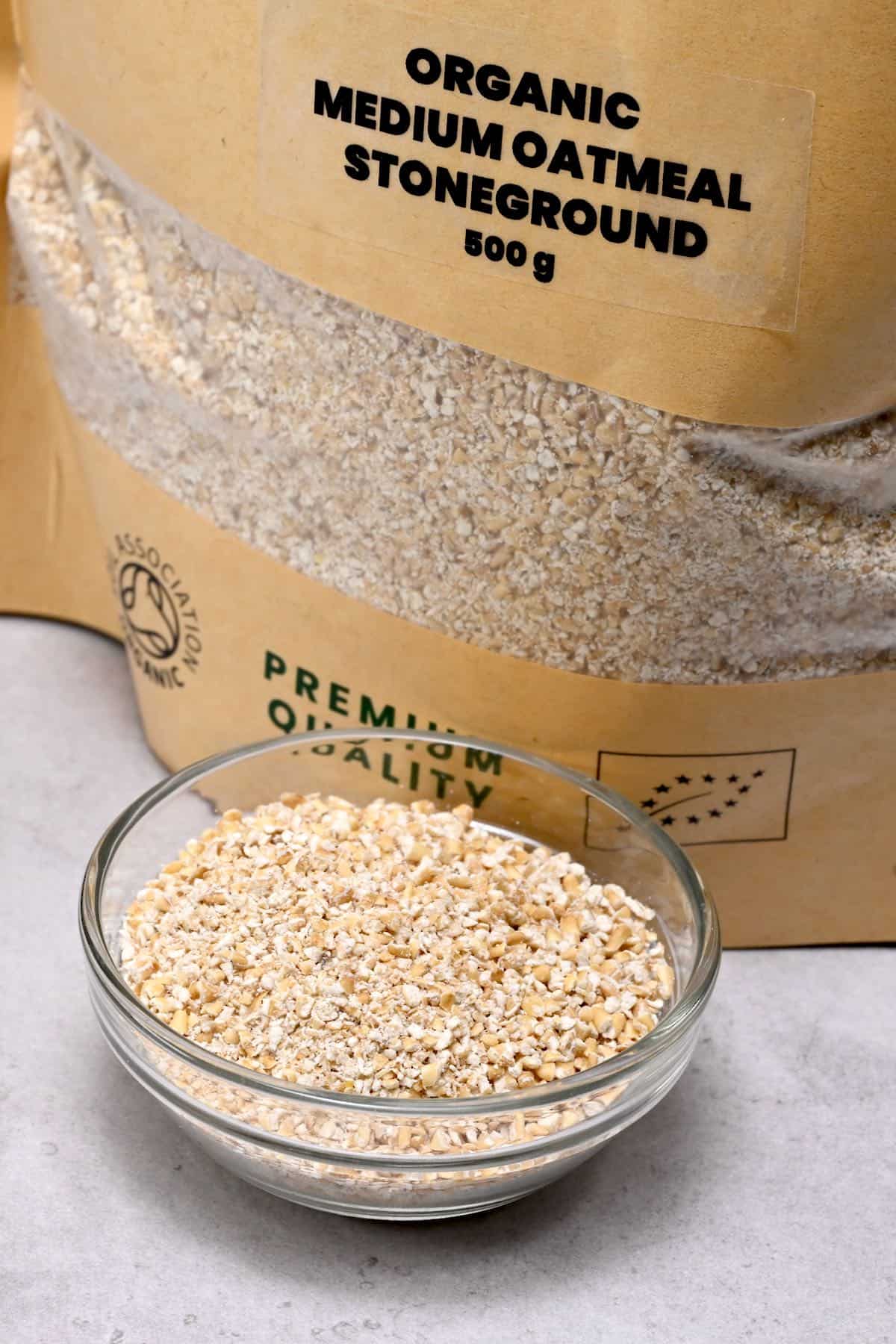
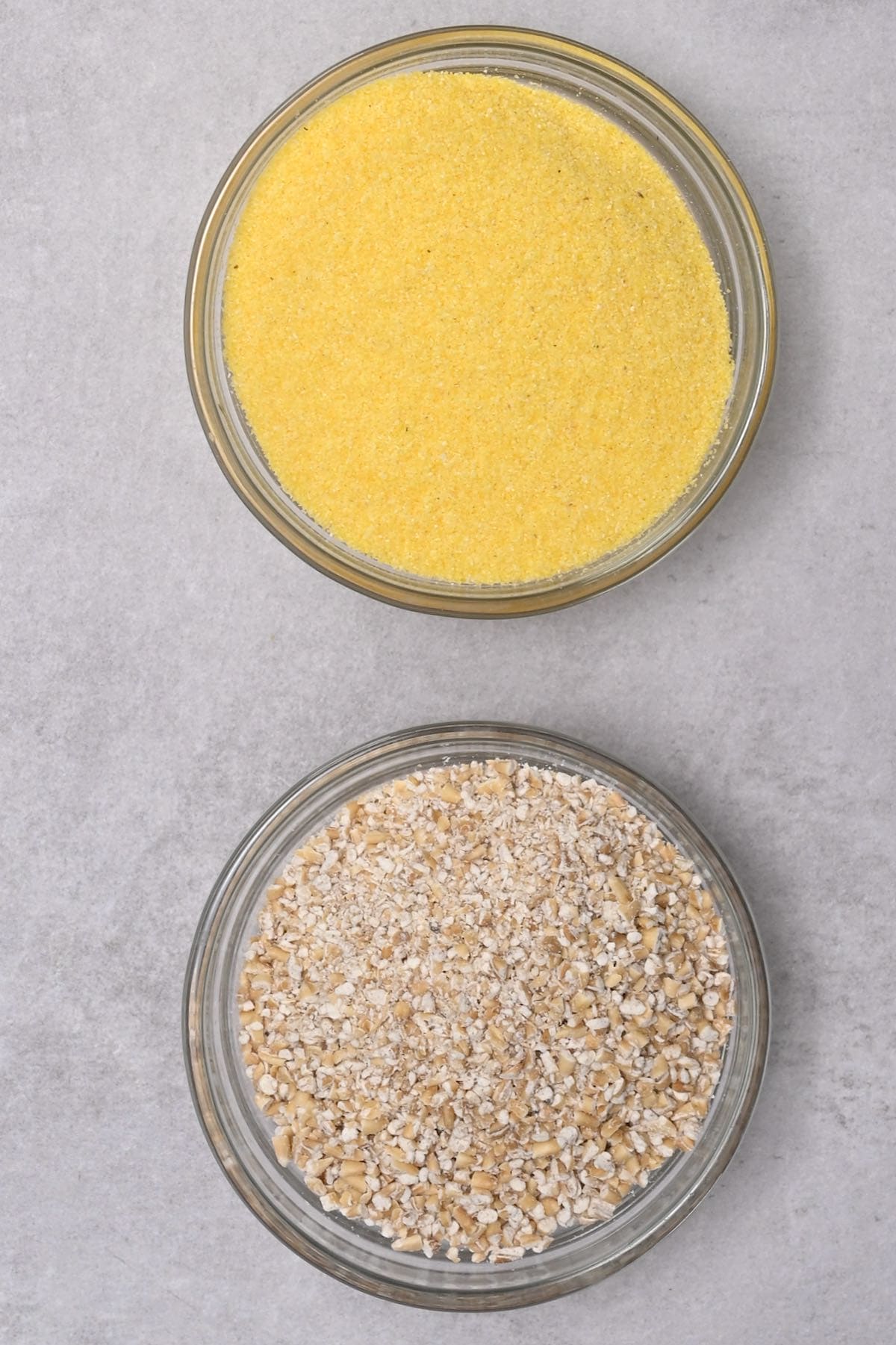
A fiber-rich cornmeal substitute, ground oats deliver predominantly on texture rather than flavor, keeping things crunchy. Best used for baking porridges, cakes, and puddings, ground oats need to be turned into a fine powder before using.
Ingredients and Measurements: Use the same measurements of ground oats as cornmeal.
Process: Grind your oats into a fine powder (this may take some trial and error) before adding as directed in the recipe.
Cornflakes
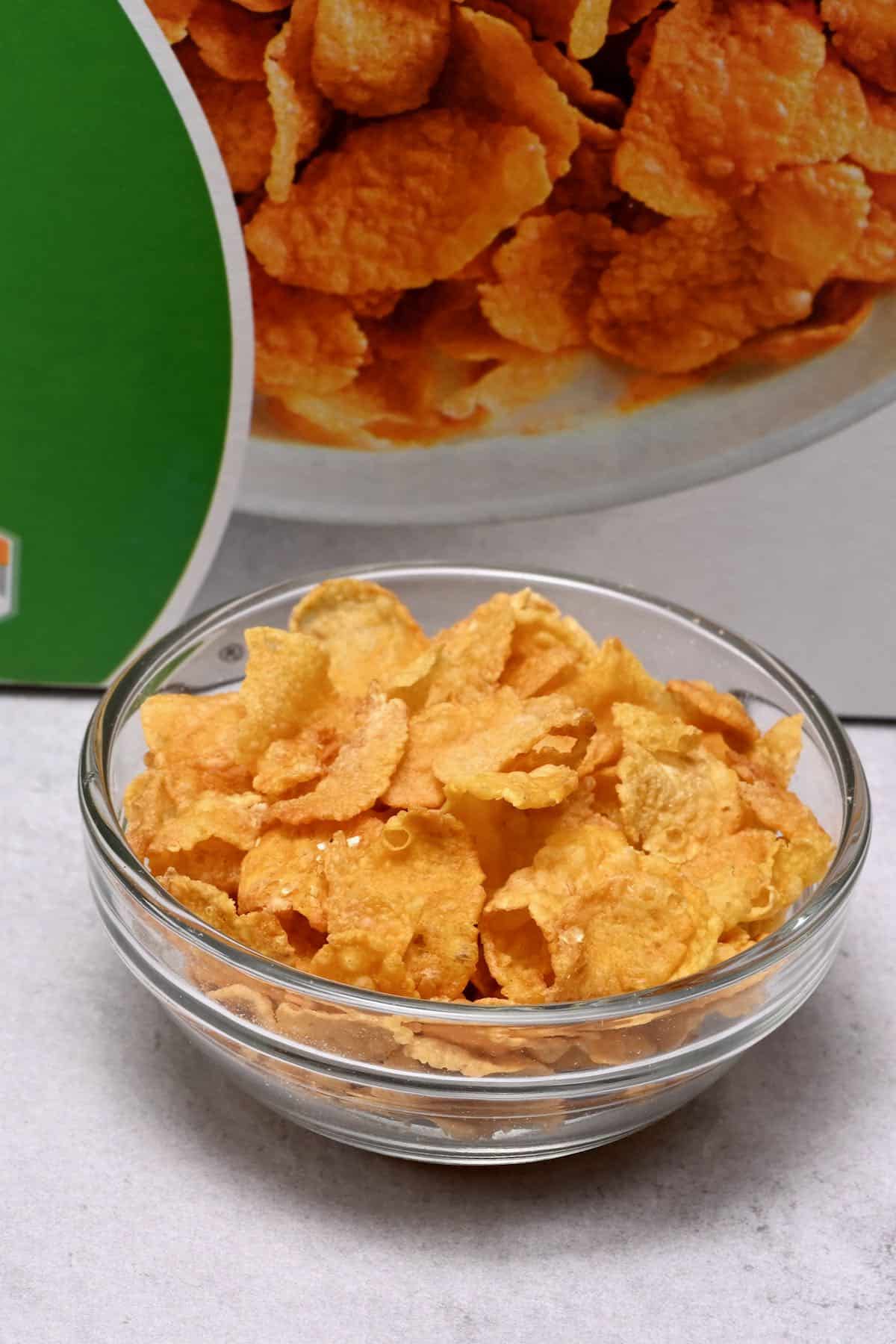
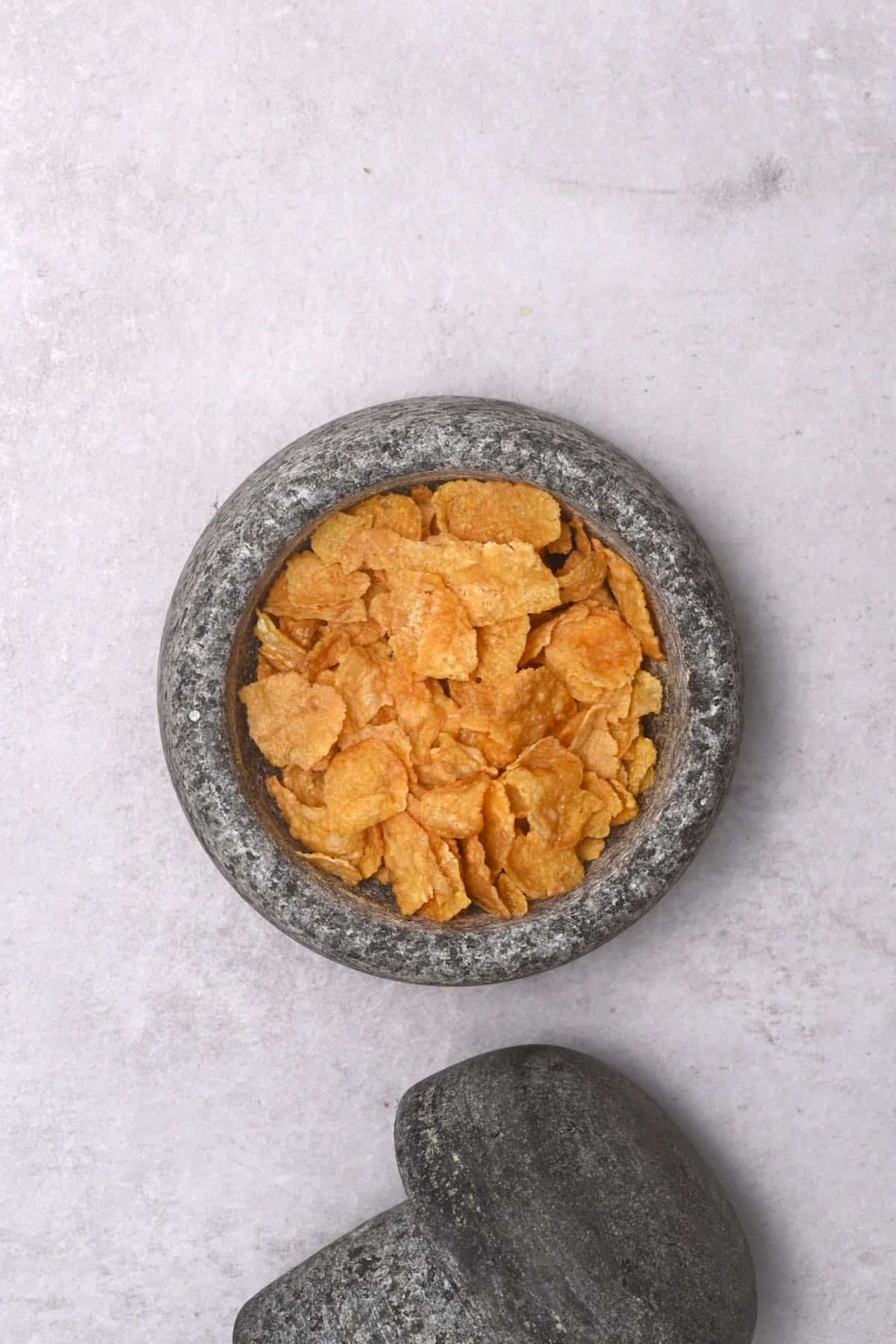
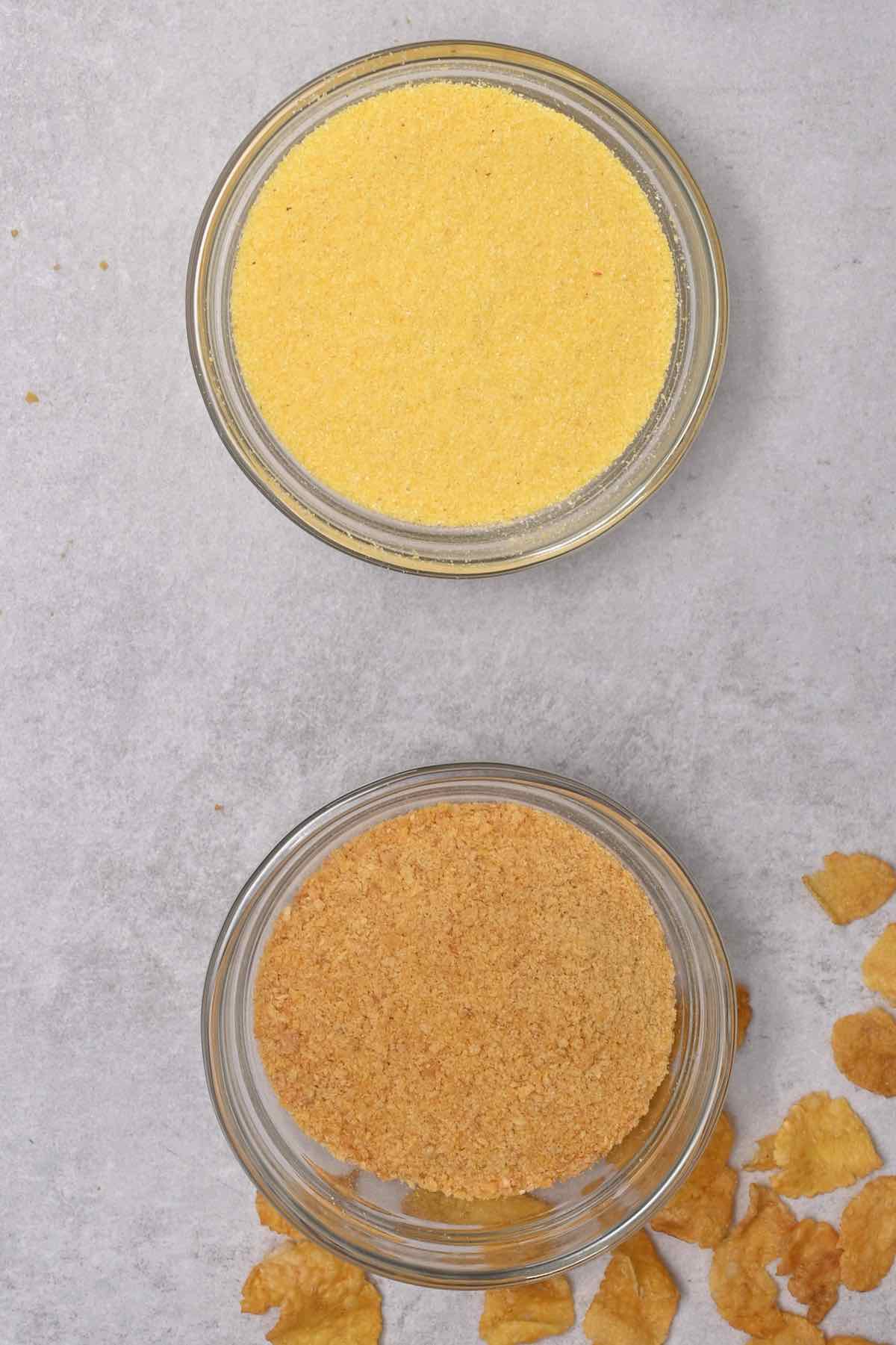
Likely an ingredient you’ve always got in your cupboard, cornflakes are a great corn meal alternative best used for breading and frying fish, chicken, or tofu. Made with the same base ingredient, it’s a better cornmeal substitute if you want to keep the classic corn flavor.
Ingredients and Measurements: Choose cornflakes that are low-sugar and high flour for the best flavor. Use the same measurements of ground oats as cornmeal.
Process: Grind the cornflakes until they’re a fine powder, then use as directed in the recipe.
Tortilla chips
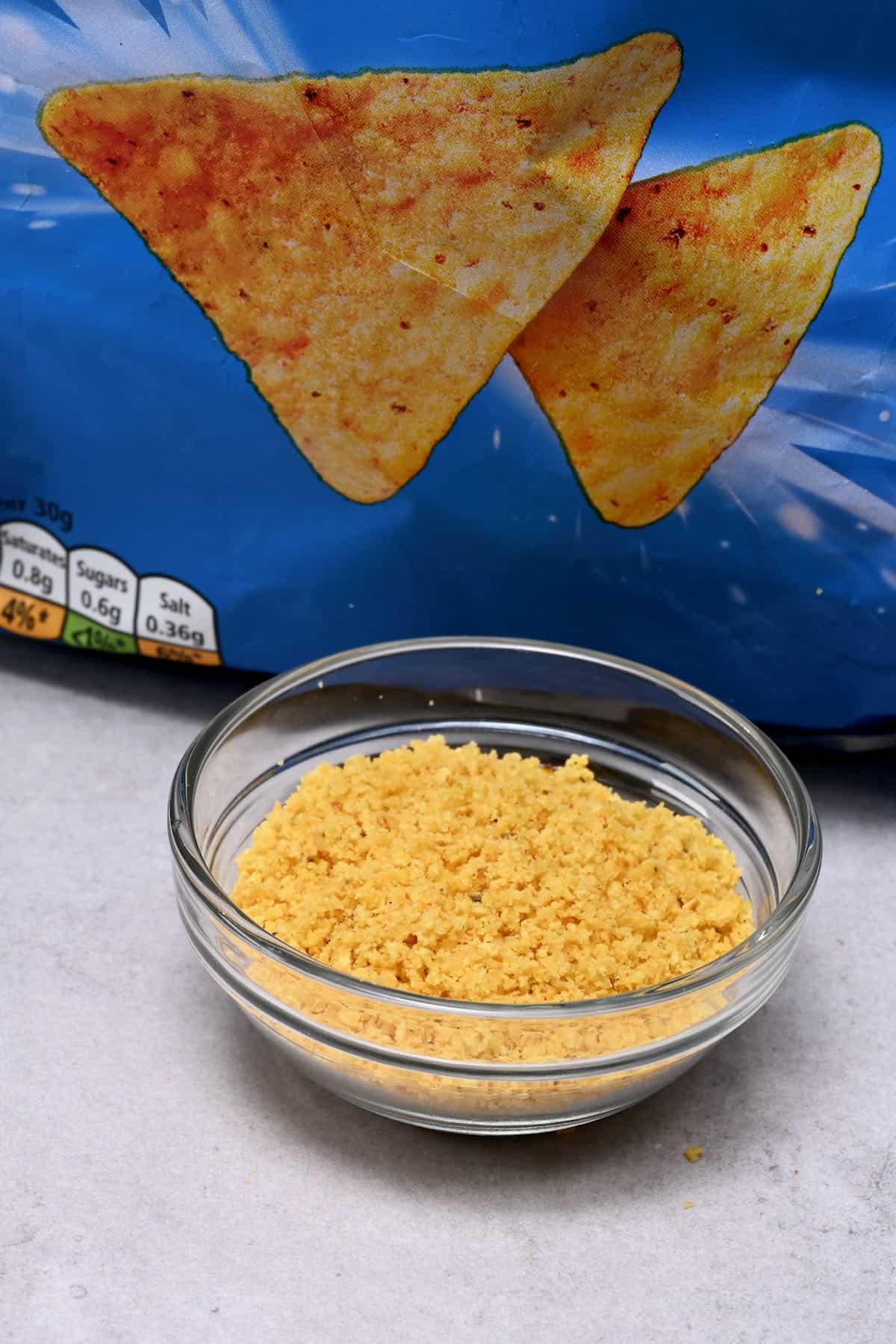
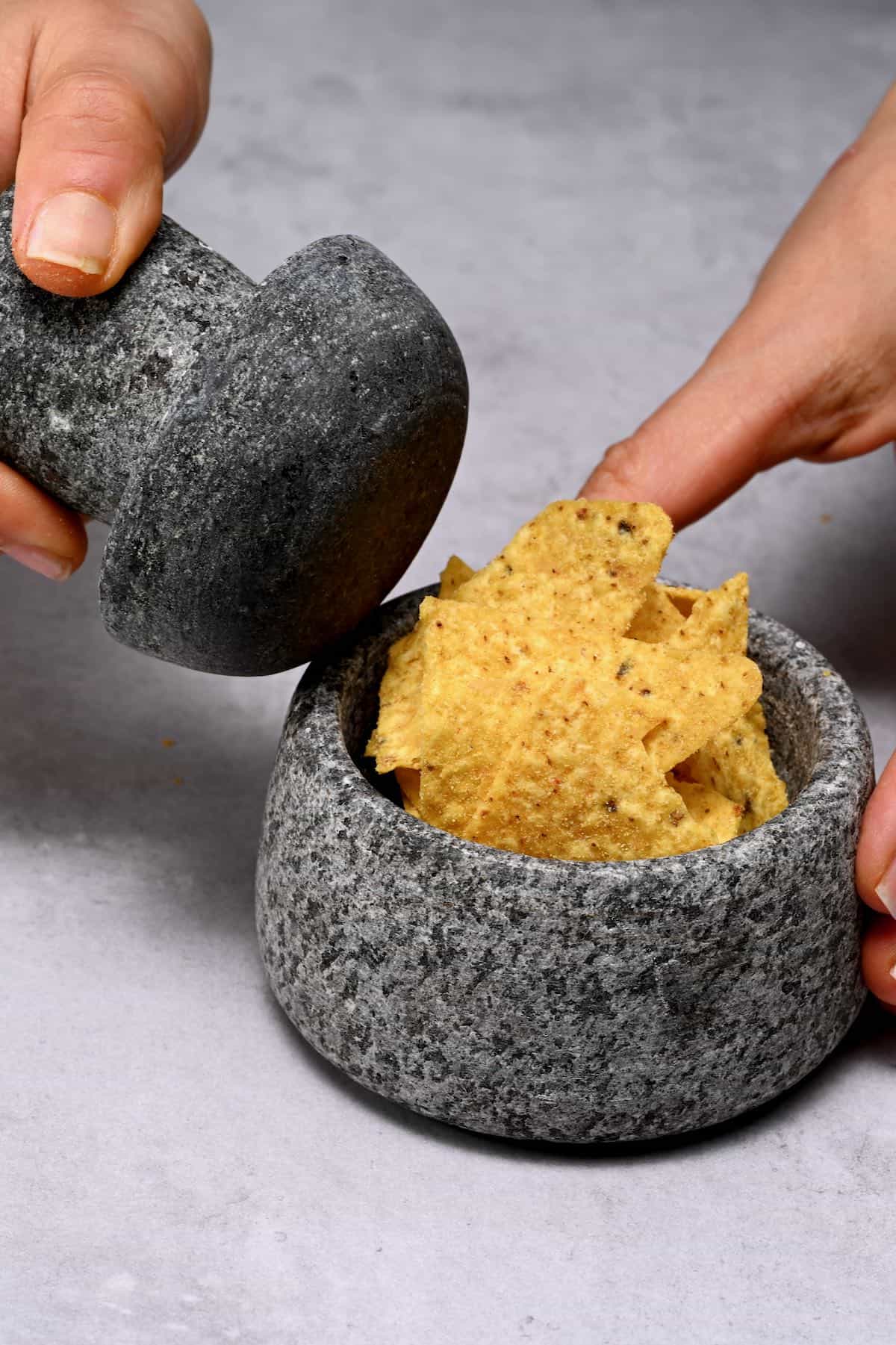
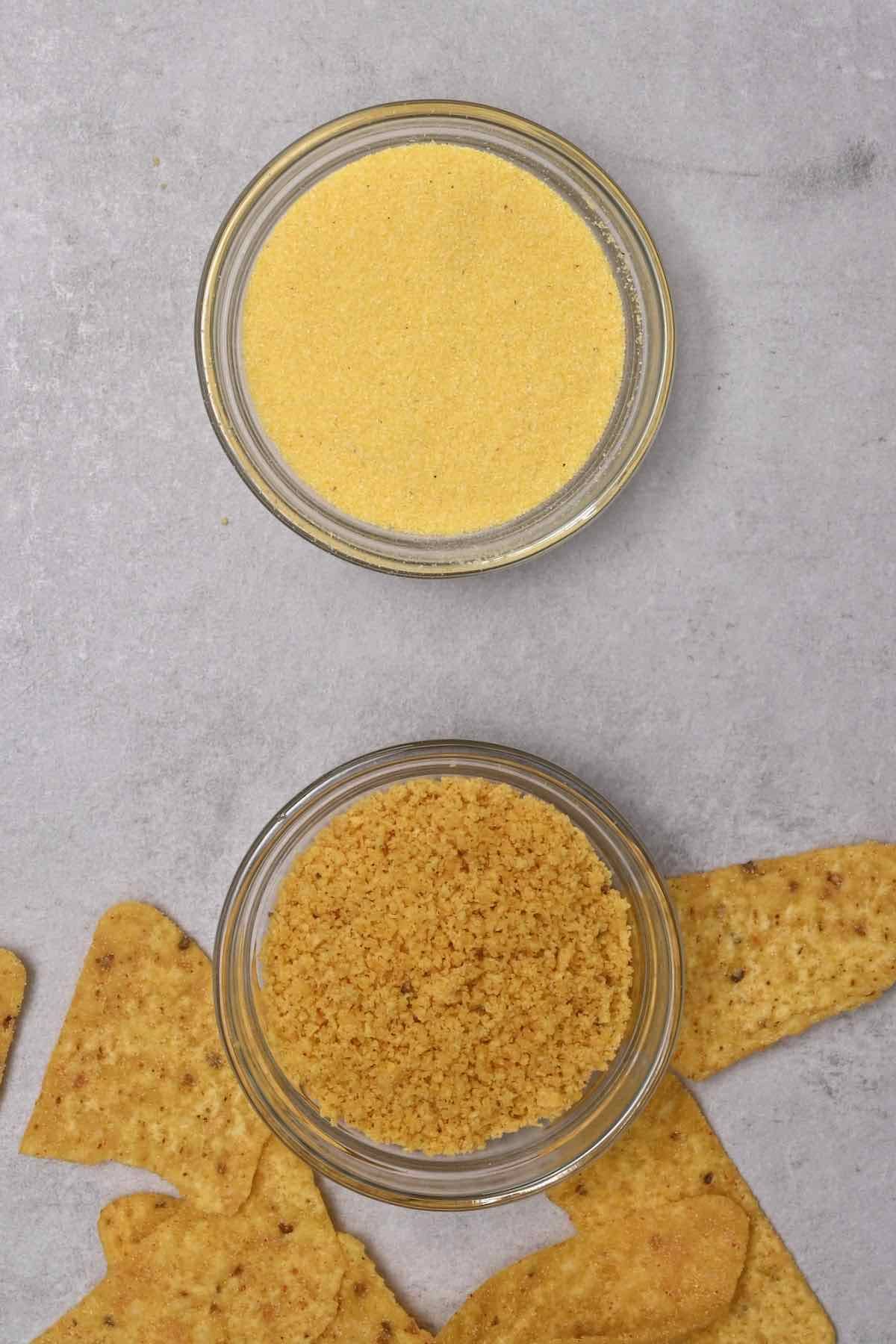
The best substitutes for corn meal in terms of flavor, tortilla chips can be ground finely to mimic the texture of corn meal. Flavored ones are the better option to deliver flavor and crunch and make a great choice for frying savory dishes or for adding crunch to dips and salads.
Ingredients and Measurements: Use the same measure of tortilla chips as you would corn meal at a ratio of 1:1.
Process: Put the tortilla chips into a blender and grind until they become a fine-ish powder and use as you word corn meal.
Ground flaxseed
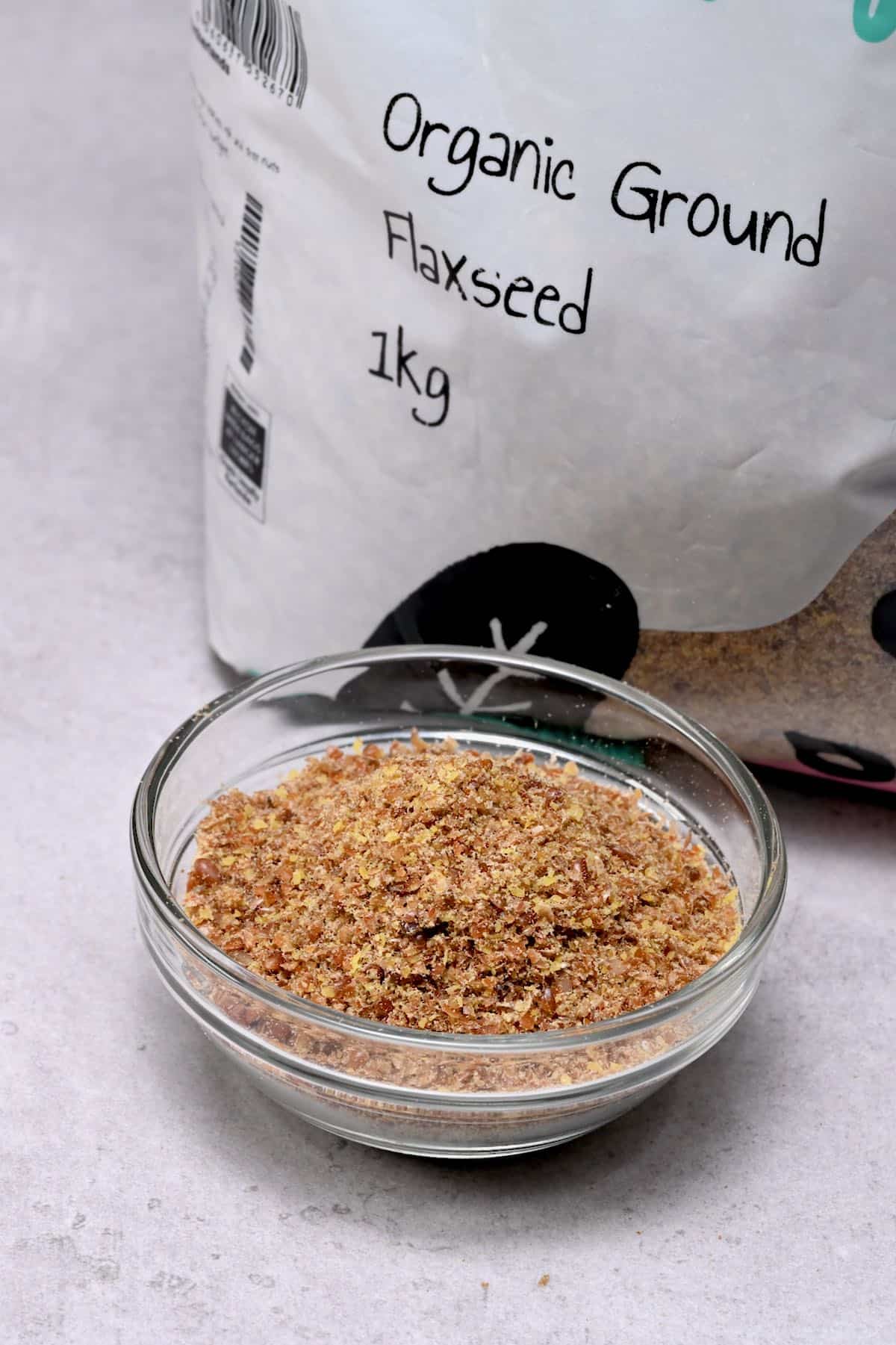
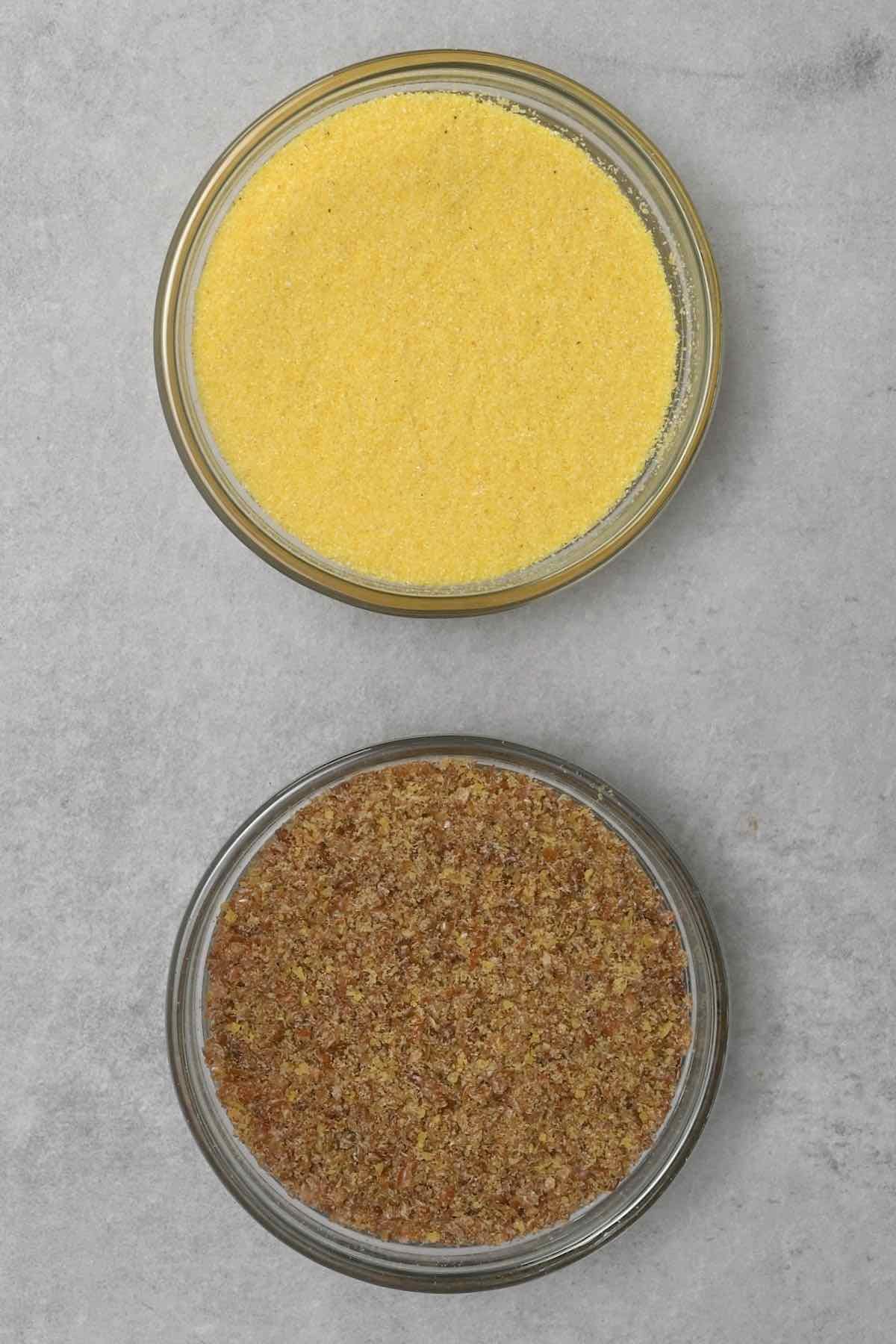
Frequently used in healthier baking, ground flaxseed has a slightly bitter taste and a crunchier texture. Whether you substitute in muffins and breads or add a spoonful or two smoothies, flaxseed is a great substitute for cornmeal that won’t alter a recipe’s texture.
Ingredients: Use equal measurements of ground flaxseed as corn meal.
Process: Grind flaxseeds in a blender or buy pre-blended. Add as directed.
Wheat flour
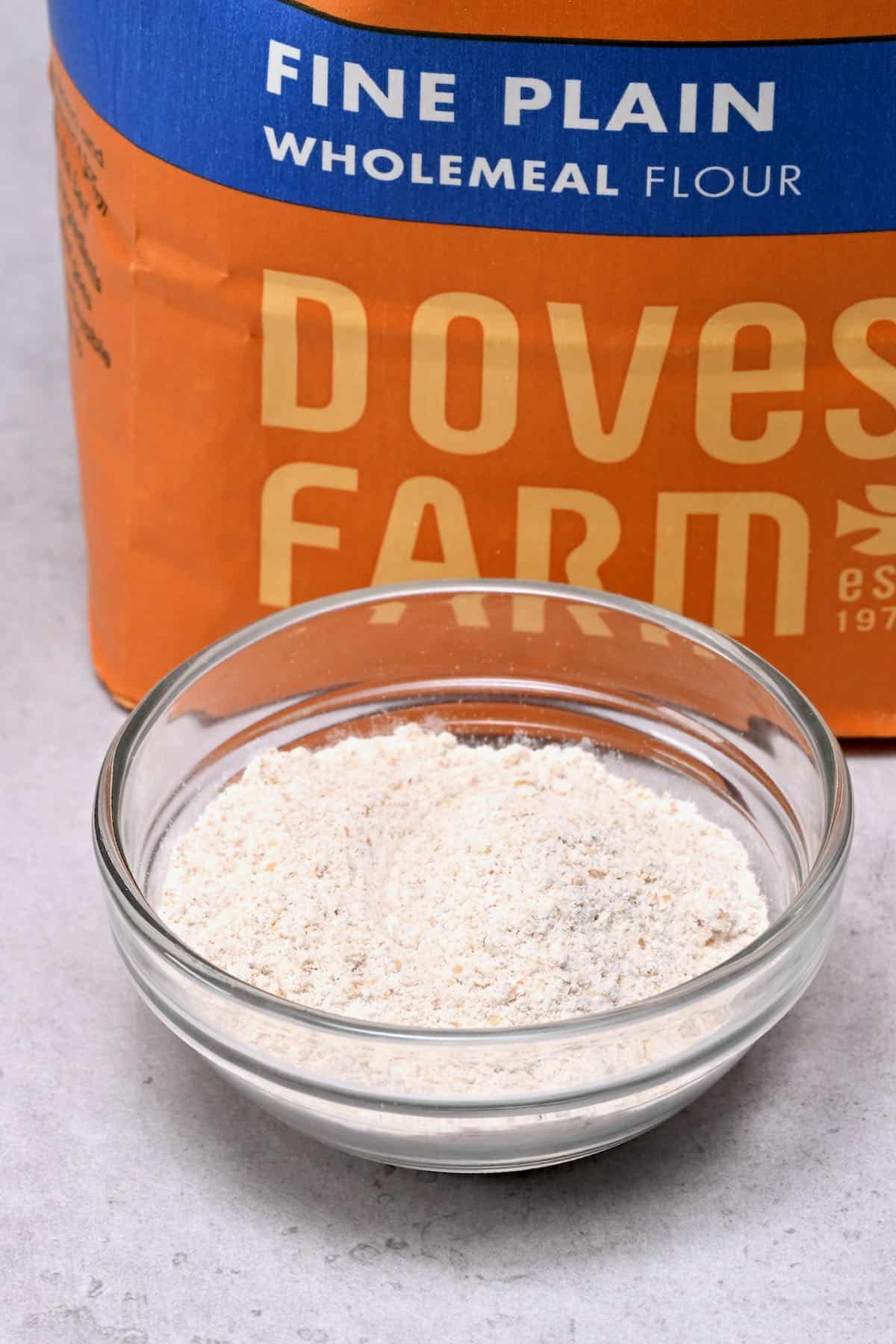
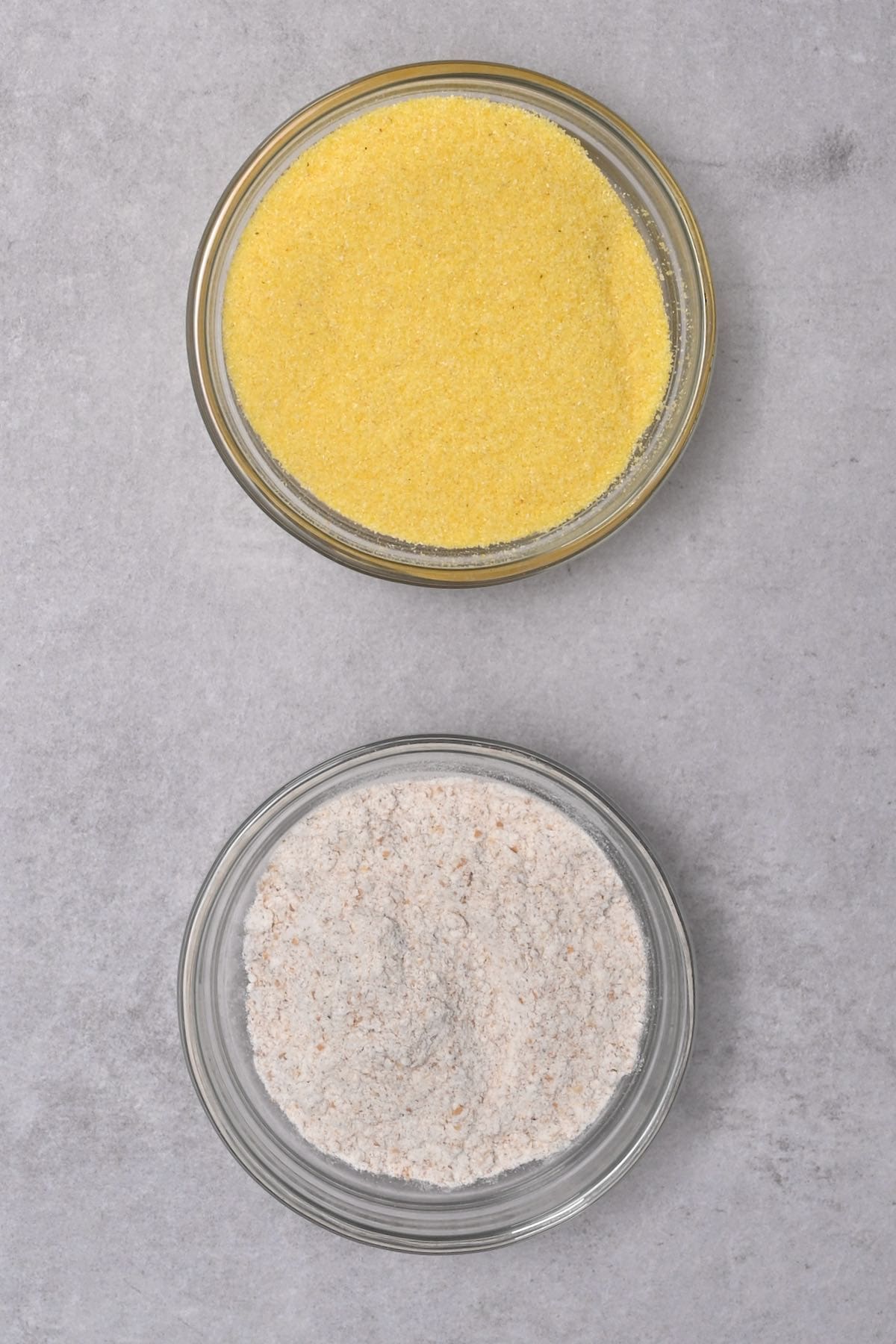
Wheat flour is a good cornmeal substitute because it has a more finely ground texture and works best for binding or coating food. You can replace it in sweet treats with extra sugar to get the same taste as cornmeal or use it to stop bread and dough from sticking to surfaces.
Ingredients and Measurements: Use the same measure of wheat flour as you would cornmeal. You may need to add extra sugar if using it in sweet dishes to replicate the corn meal sweetness.
Process: Add the wheat flour as directed – the texture and flavor will be different at the end.
Coconut flour
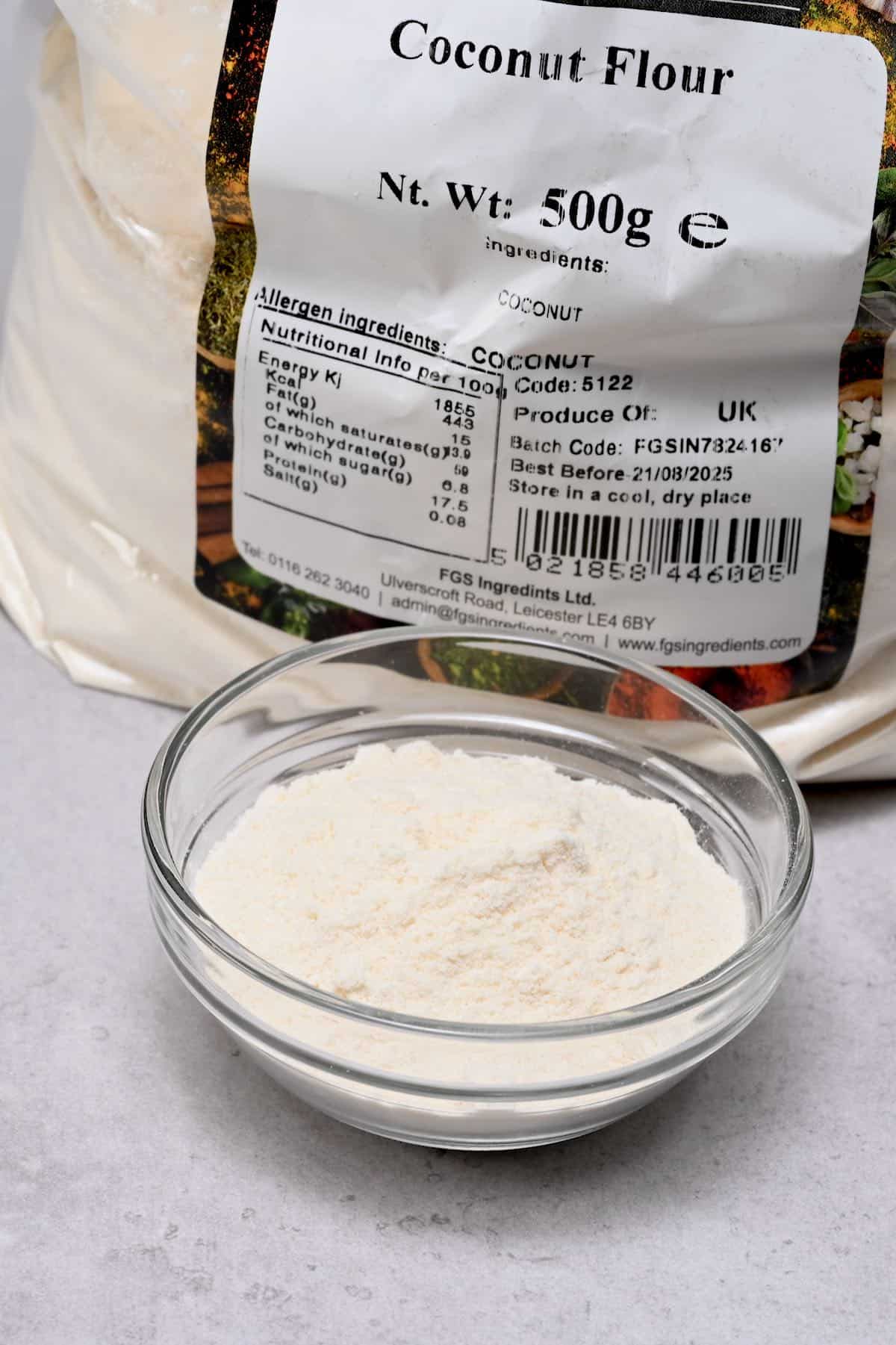
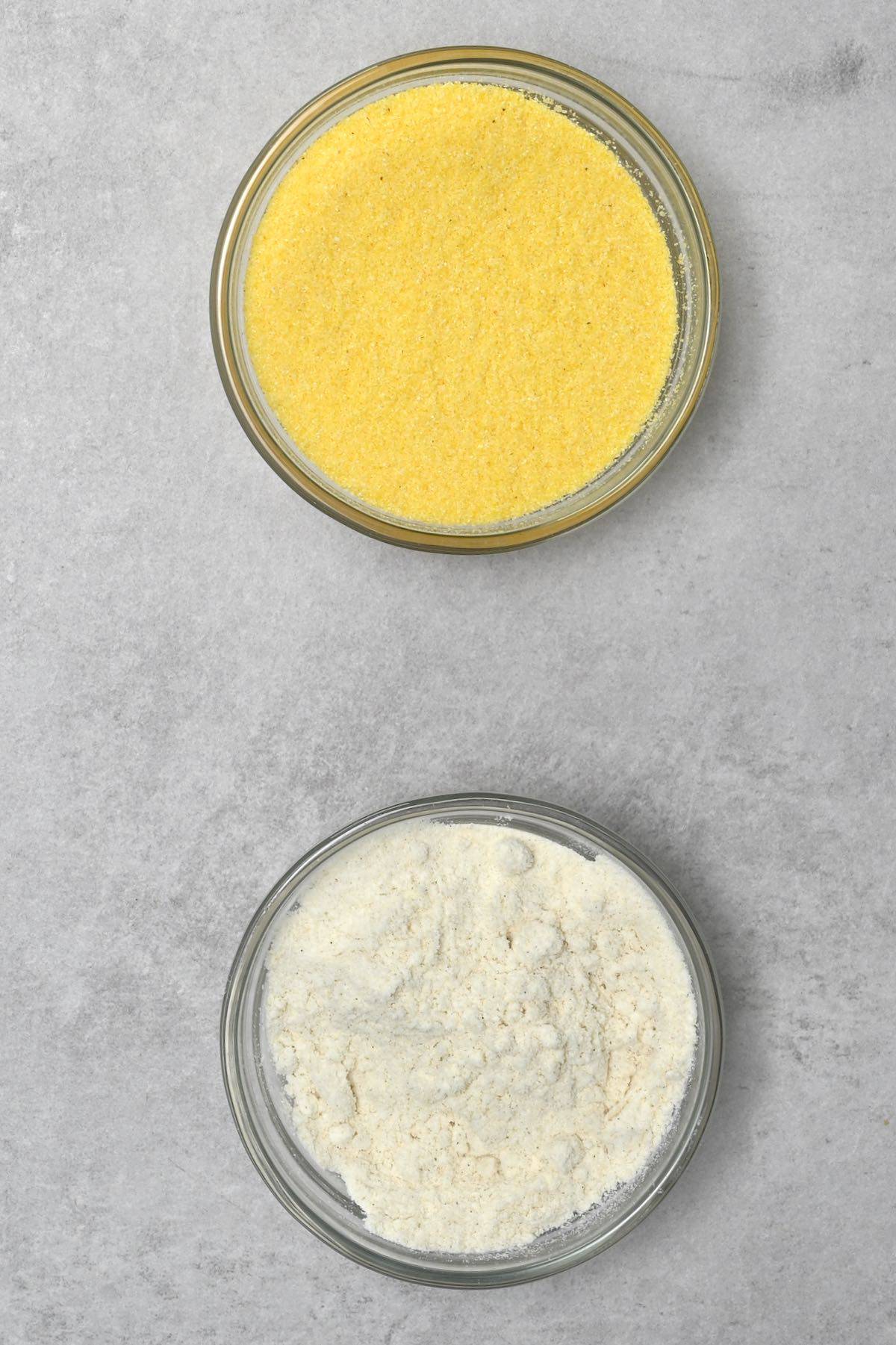
An excellent gluten-free substitute for corn meal in baking, coconut flour will change the texture of a dish, giving a lighter, softer feel overall. It has a slight sweetness and a mild taste of coconut, so it’s perfect for sweets and desserts.
Ingredients and Measurements: Use the same measurements of coconut flour as you would cornmeal.
Process: Add the coconut flour as directed. You may need to adjust other ingredients to achieve the right texture.
Almond flour
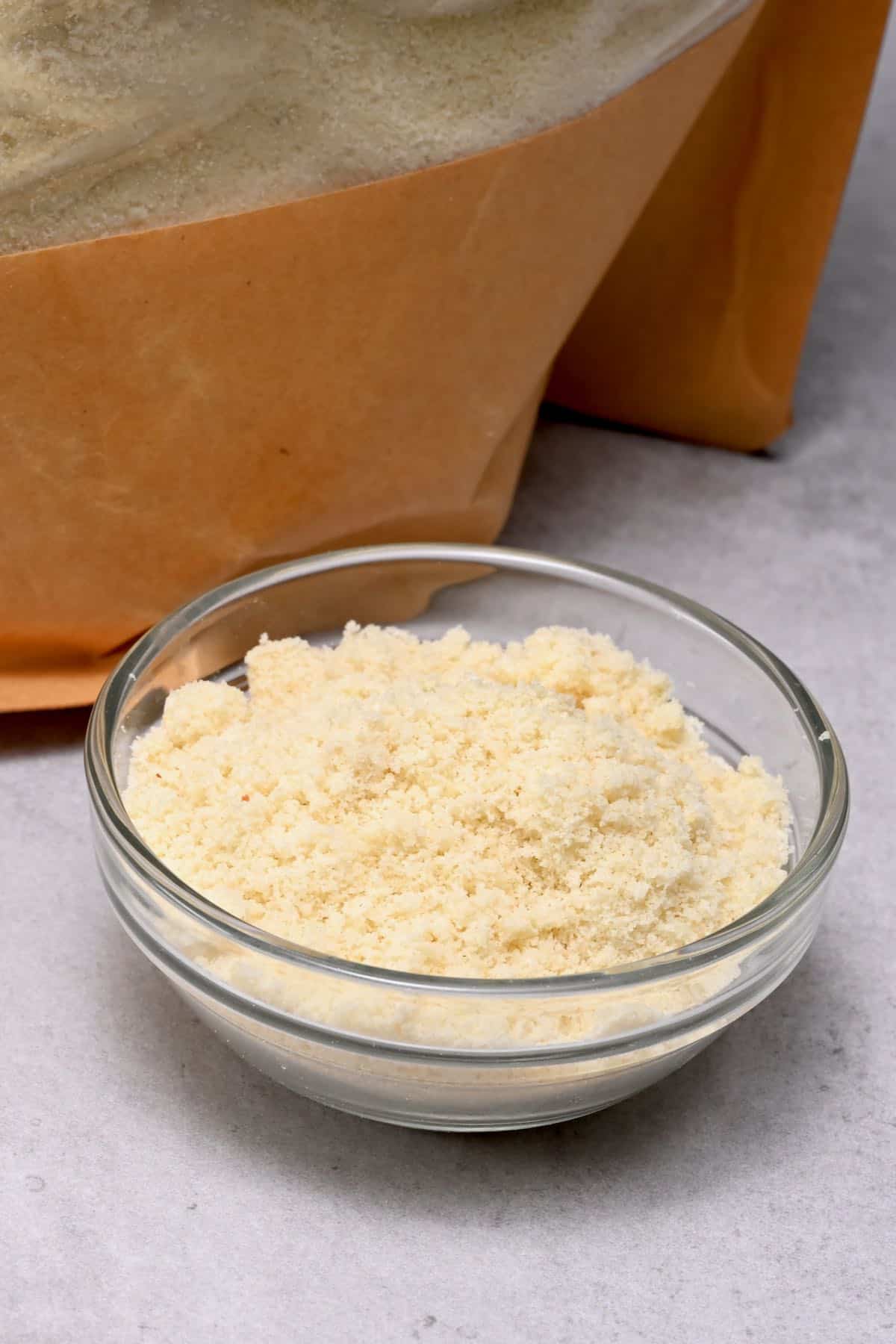
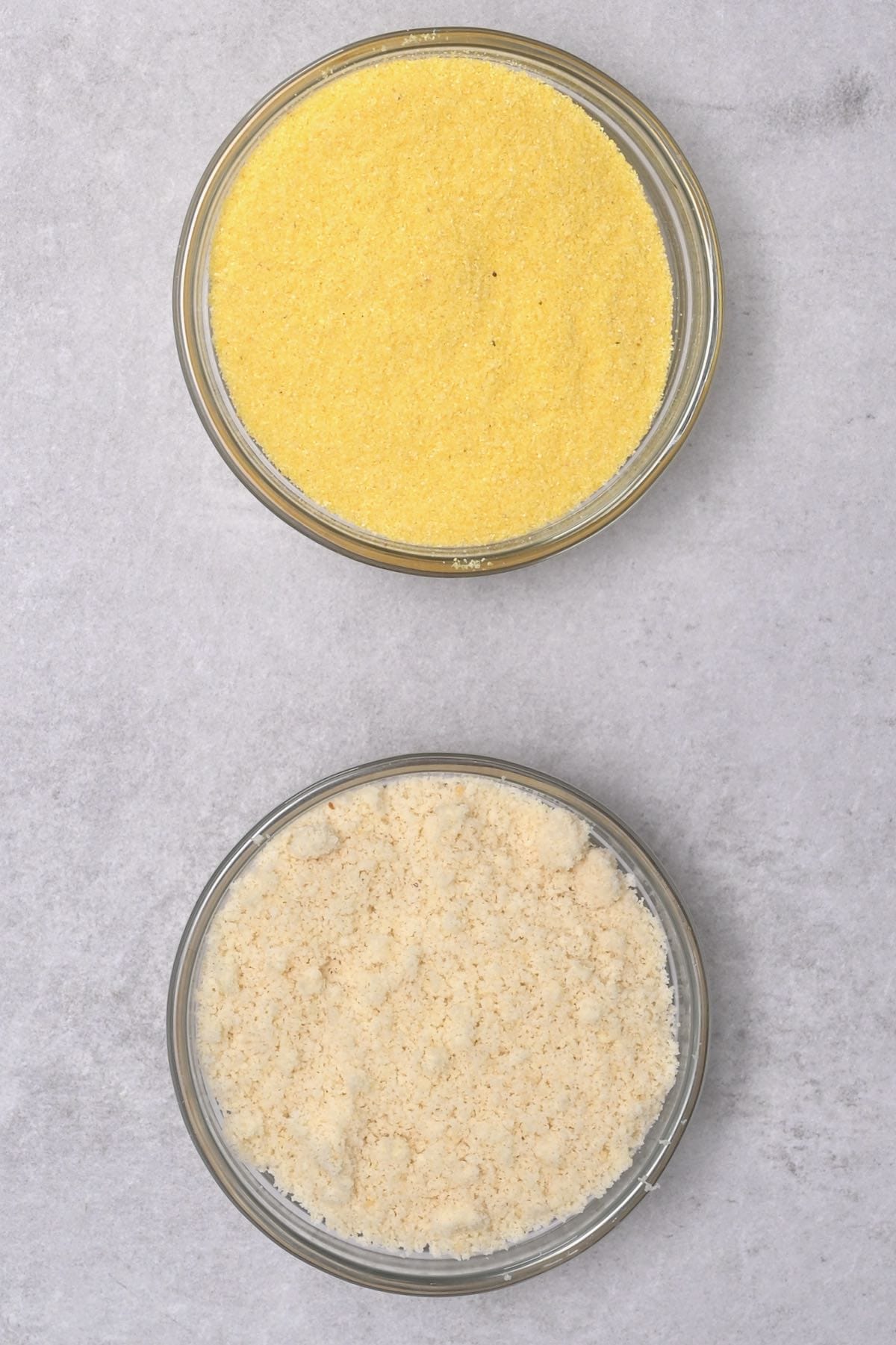
Replicating the fine texture of ground cornmeal, almond flour makes a great gluten-free alternative. With its sweeter flavor, it’s best used for sweet dishes like cookies and cakes, where it gives a wonderfully crumbly texture, just as corn meal does.
Ingredients and Measurements: Use the same measurements of almond flour as you would cornmeal.
Process: Add the almond flour as directed.
If you try any of these substitutes, let me know how it goes in the comments below. I’d appreciate a recipe card rating and would love to see your recipe recreations – tag me on Instagram @Alphafoodie!
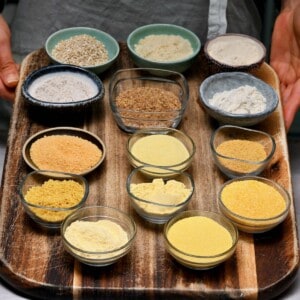
The Best Substitutes for Cornmeal
Ingredients
To substitute
- 1 cup cornmeal
Instructions
Corn flour
- Use 1 cup of corn flour. Add to the recipe as instructed. Cooking time will likely be shorter are corn flour will make a lighter mixture. Note: corn flour and cornstarch are not the same thing!
Corn grits
- Use 1/2 cup corn frits. Use as directed. For a smoother texture, you can grind the grits down to get the texture of corn meal.
Masa Harina
- Use 1 cup of masa harina. Add to the recipe as instructed.
Semolina
- Use 1 ¼ cup semolina – you'll need slightly more semolina than the recipe calls for corn meal. Add to recipe as instructed.
Polenta
- Use 1 cup of polenta OR, if using coarse polenta, then use ¾ cup. Use as the recipe instructs.
Breadcrumbs
- Use 1 cup of non-flavored, regular breadcrumbs. Use as the recipe instructs.
Ground oats
- Use 1 cup of ground oats as cornmeal. Grind the oats into a fine powder and add as directed to the recipe.
Cornflakes
- Choose low-sugar, high-flour cornflakes for the best flavor and use 1 cup. Grind the cornflakes until they become a powder, measure the amount, then use as directed.
Tortilla chips
- Use 1 cup of ground tortilla chips. Blend the chips until they become a powder, measure the amount, then use as the recipe directs.
Ground flaxseed
- Use 1 cup of ground flaxseed. Grind flaxseeds in a blender or buy pre-blended and add to the recipe as directed
Wheat flour
- Use 1 cup of wheat flour – you may want to add extra sugar for sweetness. Use as the recipe directs. The texture and flavor will be different from corn meal.
Coconut flour
- Use 1 cup of coconut flour, then add to the recipe as instructed.
Almond Flour
- Use 1 cup of almond flour, then add to the recipe as instructed.

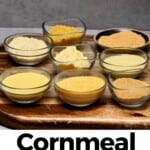
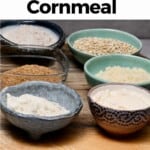









This is very helpful but I want to know the best substitute for the cornmeal to add to a pound cake with similar results in the taste and texture. Semolina or ground oats? I don’t have cornmeal but do have semolina and oats. Please help.
I need1/4 cup of cornmeal in recipe but if I use the semolina how much do I need?
Thank you
Maureen Foster
Hi Maureen,
It’s possible to use semolina instead of cornmeal in a pound cake recipe. Semolina has a similar texture but a slightly more nutty flavor. You can use the same amount of cornmeal required in the recipe—so 1/4 cup of semolina. I hope this helps.